The remarkable temples of Angkor Wat are undoubtedly the main draw for visitors to Cambodia. Although there are many other places to visit in this wonderful country and its neighbours in South East Asia, the temples from the Khmer empire, lost to the jungle for centuries, are astonishing in their scale and construction. If you visit Angkor Wat we recommend spending at least three days in the region. Here’s our guide to visiting, including info on the best way to see the sunrise at Angkor Wat.
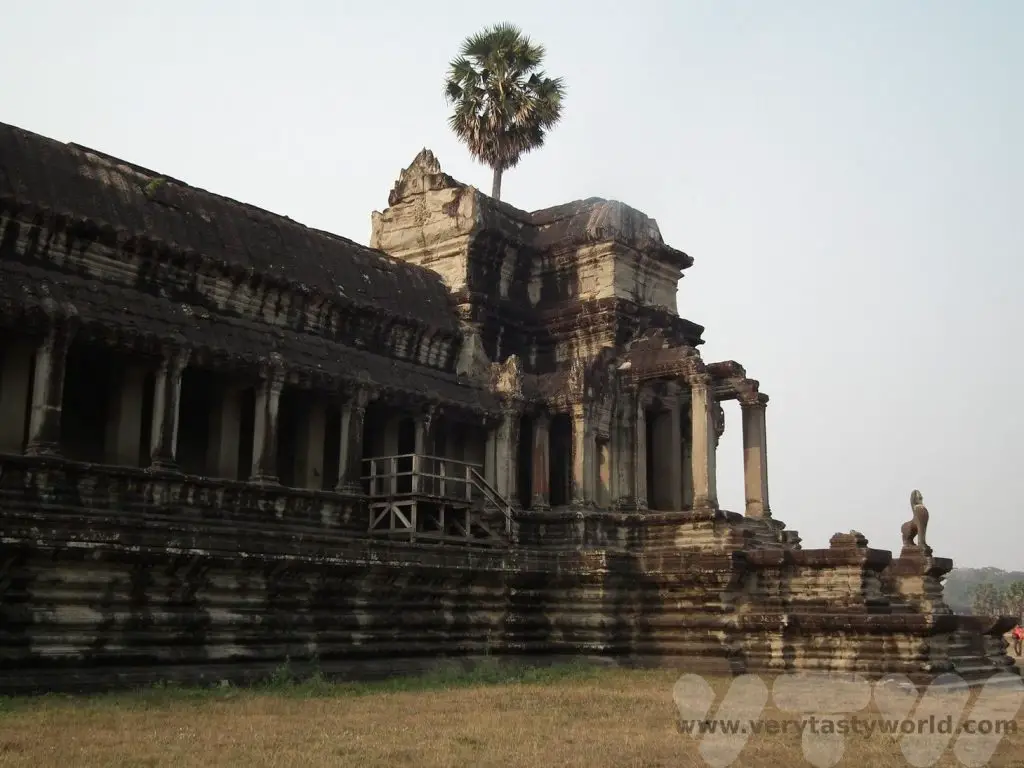
The nearest town to the main temple complex is Siem Reap, which is around 5.5 km from Angkor Wat and caters to the tourists that come to visit. There is a variety of accommodation from budget to luxury and there are loads of shops and restaurants, notably on ‘Pub Street’ where you can sample the local food. Our hotel was about 2km from the centre of Siem Reap and, while we walked back and forth most of the time, there were plentiful tuk-tuk drivers to transport us if we needed.
History of Angkor Wat
Angkor means ‘city’ and Wat means ‘temple’ – so Angkor Wat literally means ‘City Temple’. The temple complex is believed to be the world’s largest religious building.
Angkor was the central city for the Khmer kings between the 9th and 13th centuries. The Khmer Empire was vast and one of the most sophisticated kingdoms in South East Asia. Many buildings and temples were constructed by the Khmers over the centuries. At the height of their civilisation, Angkor Wat was the biggest construction, built in the early 12th century at the behest of Suryavaram II as a dedication to the Hindu God Vishnu. The temple complex is said to represent Mount Meru, the home of the gods, with the surrounding walls and moats symbolising mountains and oceans. The walls are covered with bas-reliefs, stretching for almost one kilometre they tell of tales from Hindu mythology and of the glories of the Khmer empire.
Angkor was sacked in 1177 and Jayavarman VII decided to build a new capital a short distance away, at Angkor Thom. This was, again, a religious complex, but this time a Buddhist temple. Angkor was sacked by the Thai people and then abandoned in the 15th Century, becoming a ‘lost’ city, a city of legends, to be ‘rediscovered’ by French explorer Henri Mouhot in 1860. In 1908 restoration of the complex began. It ground to a halt during the 1970s during the political unrest during the brutal regime of the Khmer Rouge and when work resumed in the 1980s extensive repairs were required. Angkor Wat became a UNESCO site in 1992 and restoration work has continued to this day.
Visiting Angkor Wat – Practicalities
You need to have a ticket in order to visit Angkor Wat and the surrounding temples. While it is possible to visit the main temple and Angkor Thom in a day, as both are located quite close to each other, we chose the 3 day ticket so that we could explore some of the other temples in the region. It is also worth finding a guide and transportation as many of the temples are located several kilometres apart. There are various options for getting a guide. We had one lined up prior to arriving in the nearby town of Siem Reap but you should be able to find a reputable, certified guide via your hotel. There will also be many guides around Siem Reap who will offer their services, which may or may not be reliable. And, of course, you can find online tours, which will usually have reviews, so you can check those out. The best guides will know when to visit the attractions in order to avoid the worst of the crowds, will be able to show you the ideal photo spots and, most importantly, will also have loads of information about the history of the sites.
If you don’t wish to have a guide you will still need transportation especially if you plan to visit some of the temples that are further away. Tuk-tuks are easy to find in Siem Reap and are a great way of getting around. You can negotiate a price with the driver.
You cannot get into Angkor or the surrounding temples without a ticket which you buy at the official ticketing centre. The tickets are non-transferable and will have your photo printed onto them. Click here for the latest info and prices.
You can get 1 day, 3 day or 7 day passes. They don’t have to be used on consecutive days. The 3 day pass can be used over the course of a week and the 7 day pass can be used over a month. We had a 3 day pass which enabled us to visit a number of the temples.
There is also a code of conduct for visitors, which are basically a matter of common courtesy:
Wear appropriate clothing (i.e. be respectful, very short shorts and sleeveless shirts are not suitable).
Do not touch the monuments.
Refrain from talking loudly.
Do not enter prohibited areas. These are clearly marked and are usually there for safety reasons.
No smoking.
Do not buy souvenirs from children – they should be in school.
Do not take photos of monks, unless you ask their permission. Also, do not touch monks. (But, honestly, why would you?)
Sunrise at Angkor Wat – The Main Attraction
Seeing the sunrise at Angkor Wat is an essential activity. Unfortunately this is an essential activity for all visitors so it does get really crowded. There are two tips to make the sunrise visit easier.
The night before your visit, ask your hotel or hostel to prepare a packed breakfast for you or stock up on some food from any of the many stores in Siem Reap. Then set your alarm and get an early night. Try to get to the site as early as possible. The site will be open from 5am. (N.B. Most other sites are open from 7:30am so Angkor Wat is an exception.) If you are with a guide, they will often know the best spots from which to view the sunrise. It’s worth the wait as the darkness fades and anticipation mounts as the sun begins to appear.
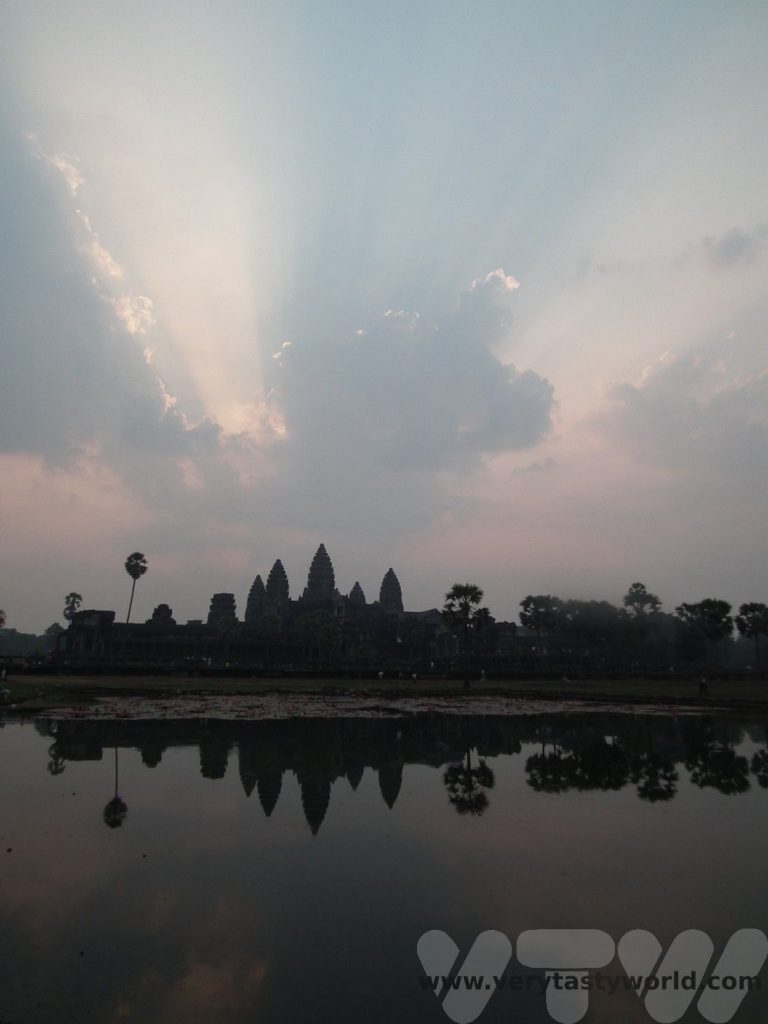
Once the sun has risen and the assembled throng have sighed their admiration, most people will go back to their hotels for breakfast. If you have your breakfast with you, you can enjoy it whilst admiring the view before the temple itself opens and then be first – or at least amongst the first – in the queue to explore the complex properly. It made a huge difference to us – exploring the temple with only a few other people around.
As time goes by, it’s a possibility that increasing numbers of visitors will cotton on to this tactic so it’s always worth checking with the guides or your hotel to find out when is the best time to visit. And, having enjoyed a peaceful exploration of Angkor Wat, when we went into Angkor Thom the Bayon was swarming with visitors.
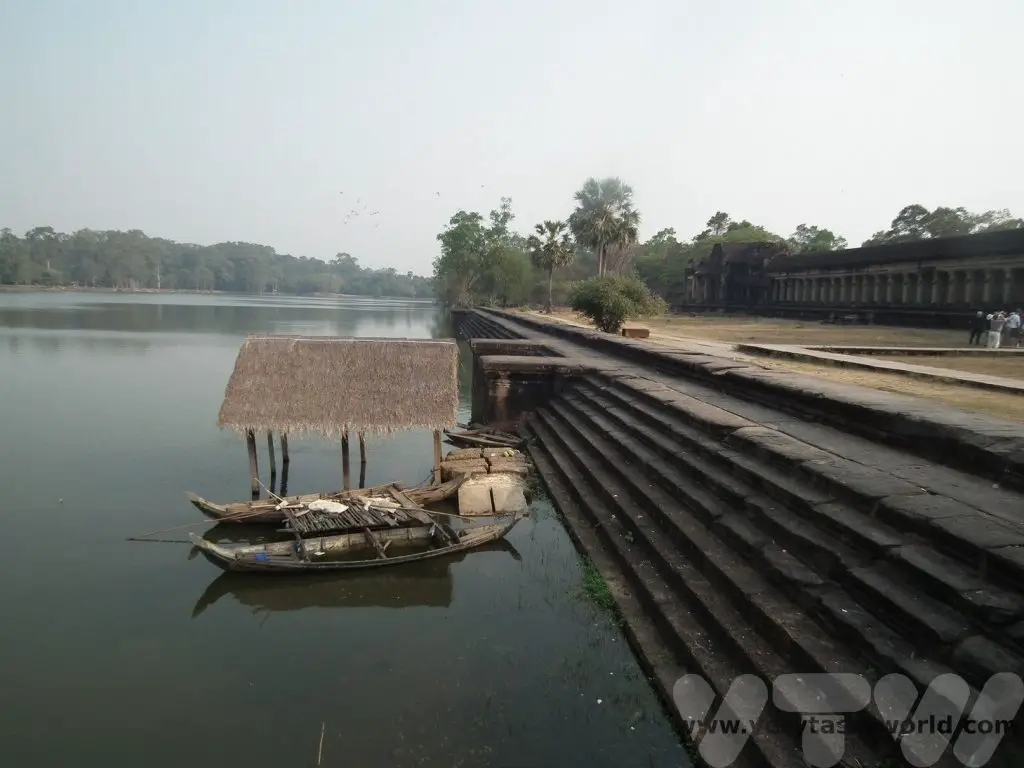
The Angkor Wat complex is surrounded by a large moat.
The temple itself is located on a raised terrace with three galleries, each increasing in height, surrounding a central tower.
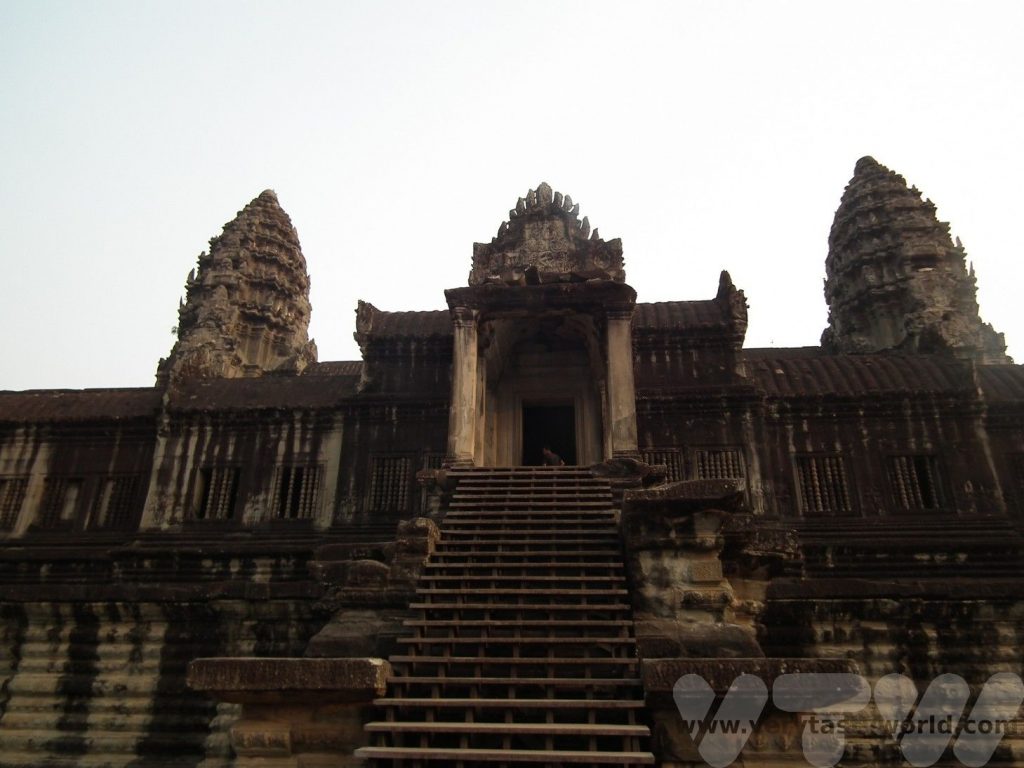
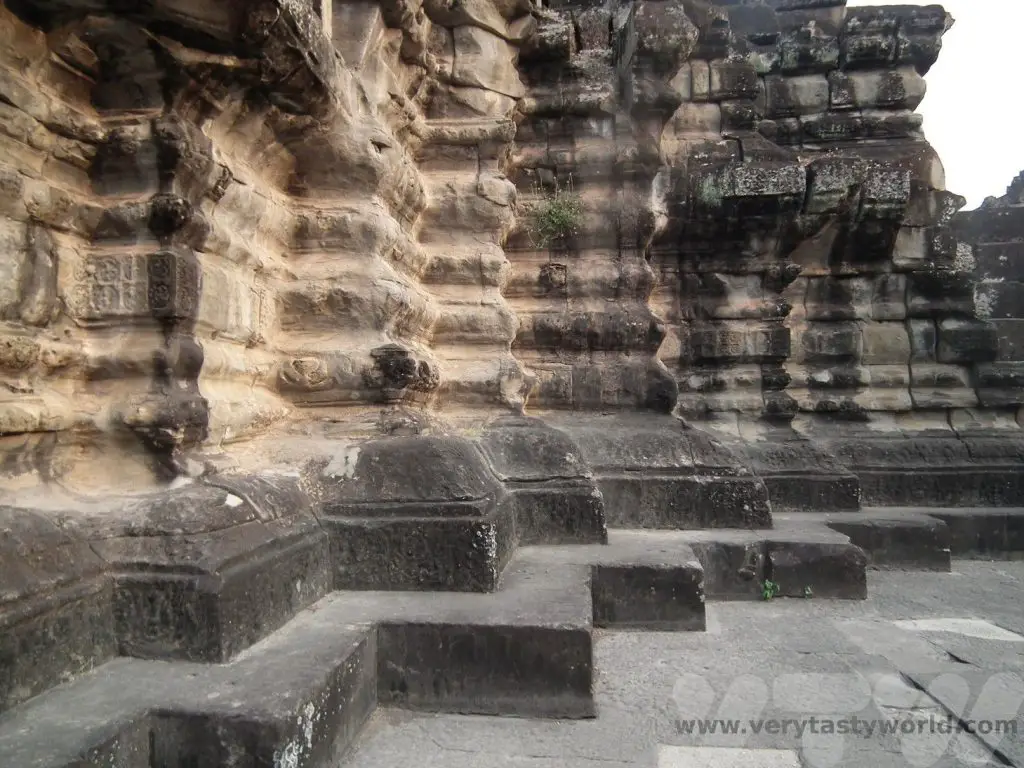
Each corner of the temple has a tower.
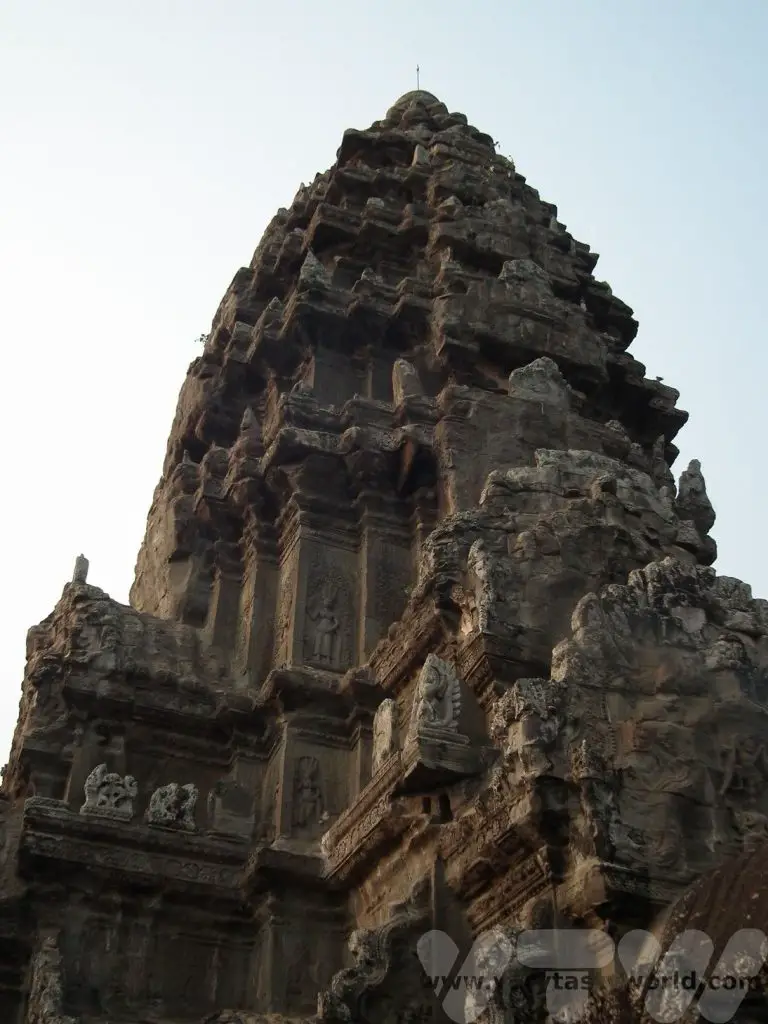
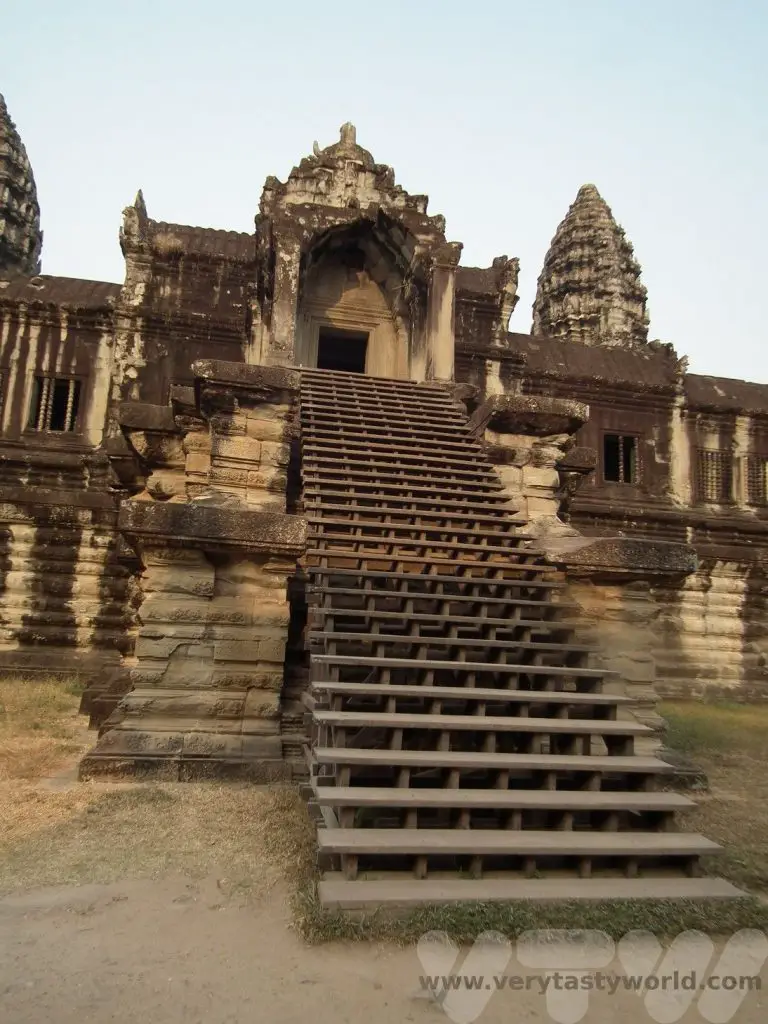
The temple façade is covered with beautiful and intricate bas-relief carvings, showing gods and figures from Buddhist and Hindu scriptures, even depicting scenes from the Hindu texts the Mahabarata and the Ramayana. The carvings were created with the intention of viewing them in an anti-clockwise direction.
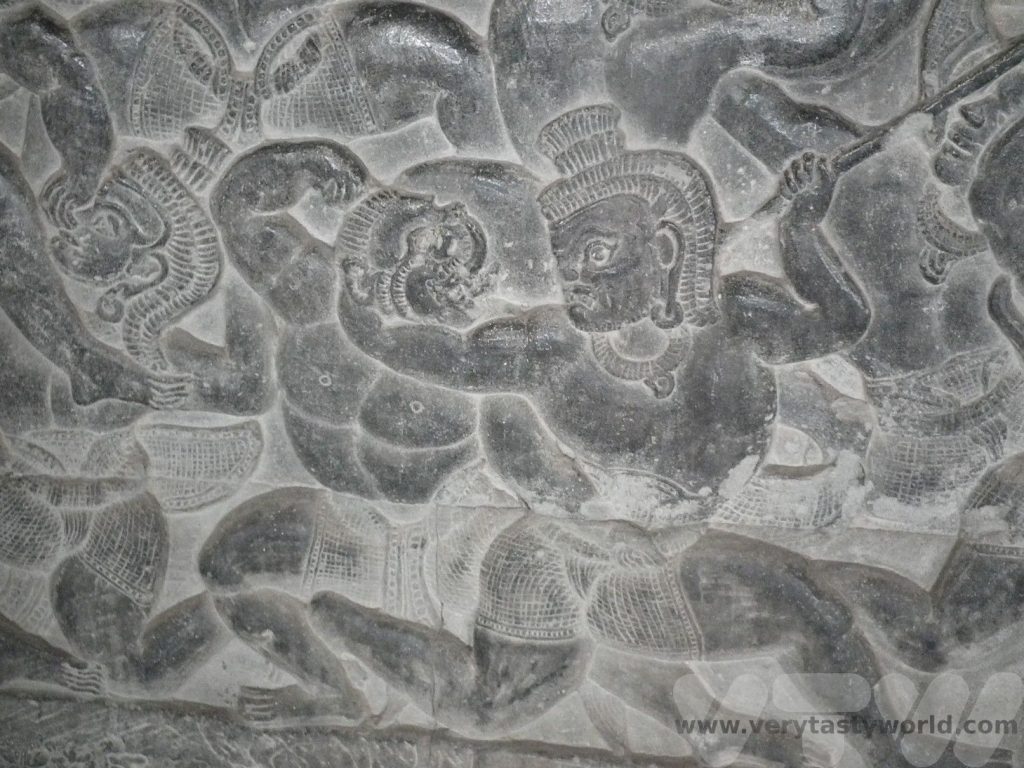
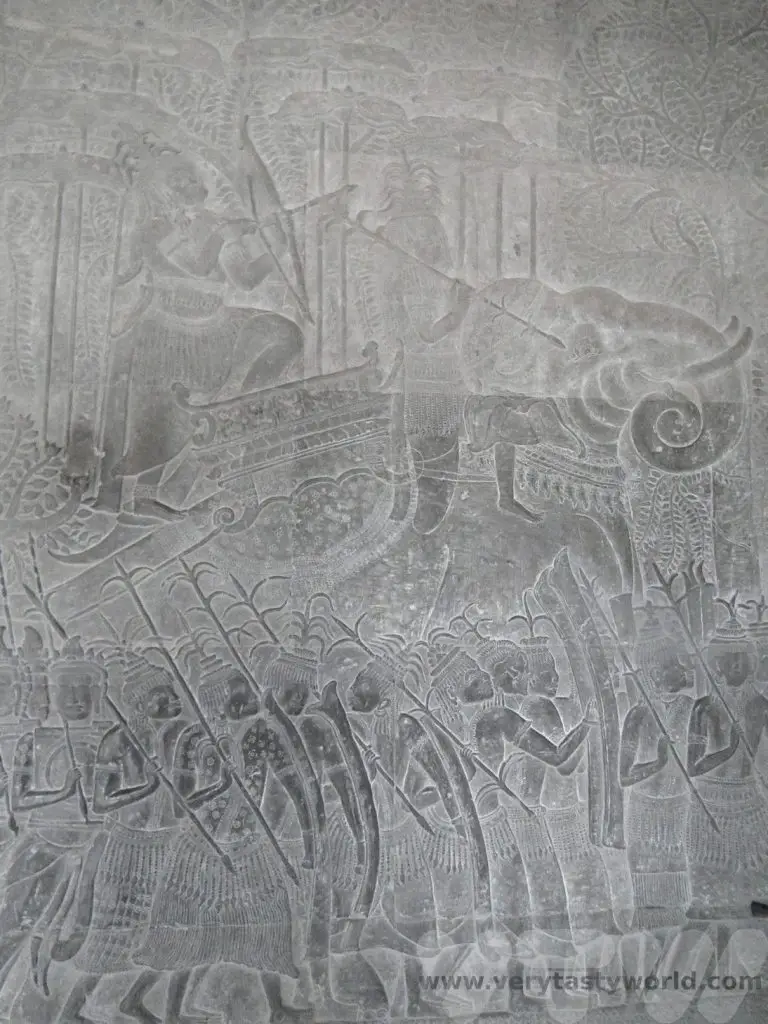
It is possible to enter the central tower. We were quite surprised to find images of Budhha inside, particularly as Angkor Wat was constructed as a Hindu temple.
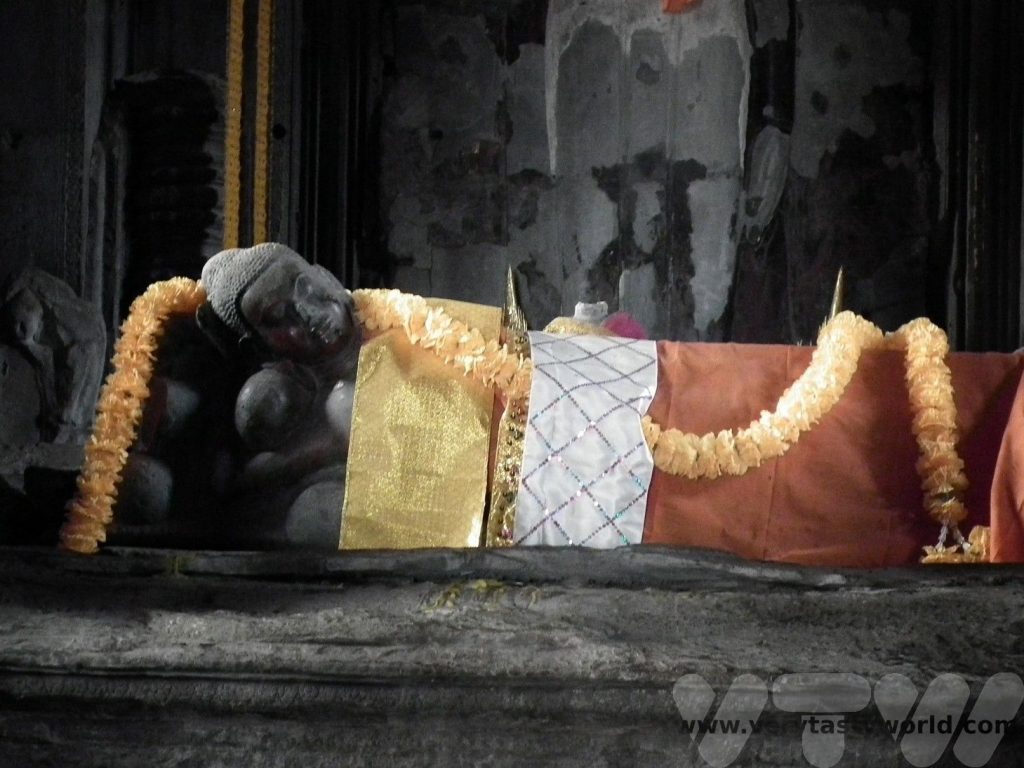
Angkor Thom
Angkor Thom was our next stop. Located a couple of kilometres away from Angkor Wat, it was the final capital city of the Khmer Empire. Established in the late 12th century by King Jayavarman VII, it covers an area of 9km² and was the most enduring of all the sites. Jayavarman was a Buddhist so the temples at Angkor Thom were dedicated to Buddhism. Indeed, during the king’s reign the Khmer people converted from Hinduism to Buddhism.
Angkor Thom includes sights such as the South Gate, a wonderful way to enter the complex, with its grand – and quite grotesque – guardians of the bridge as you cross the moat.
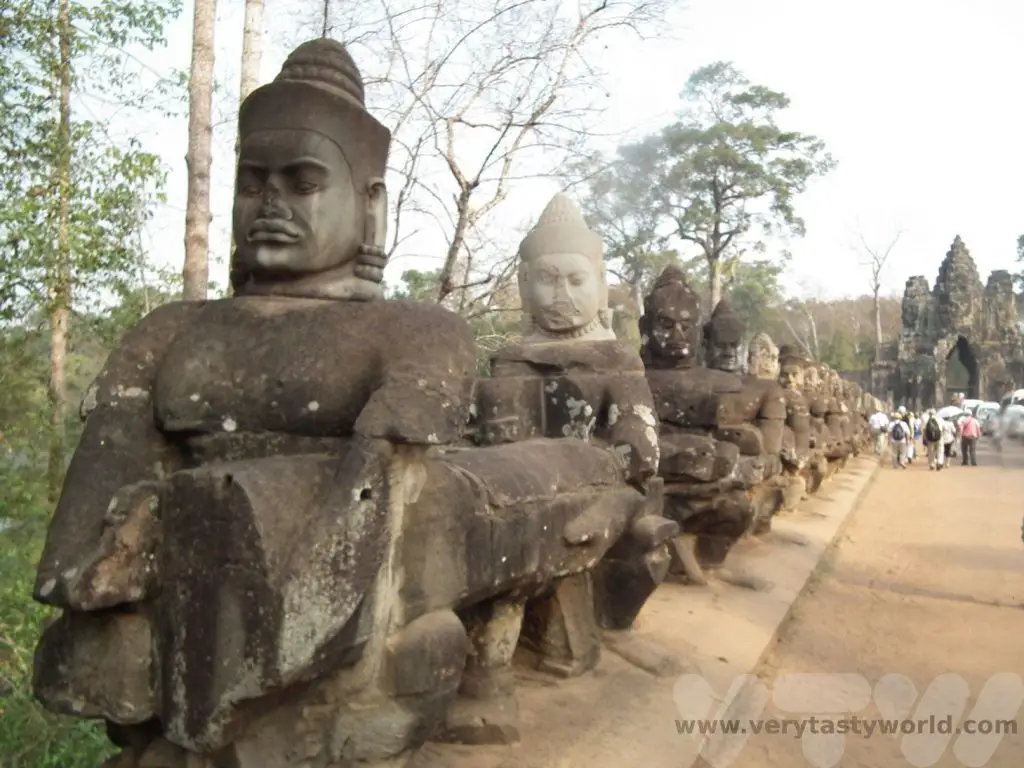
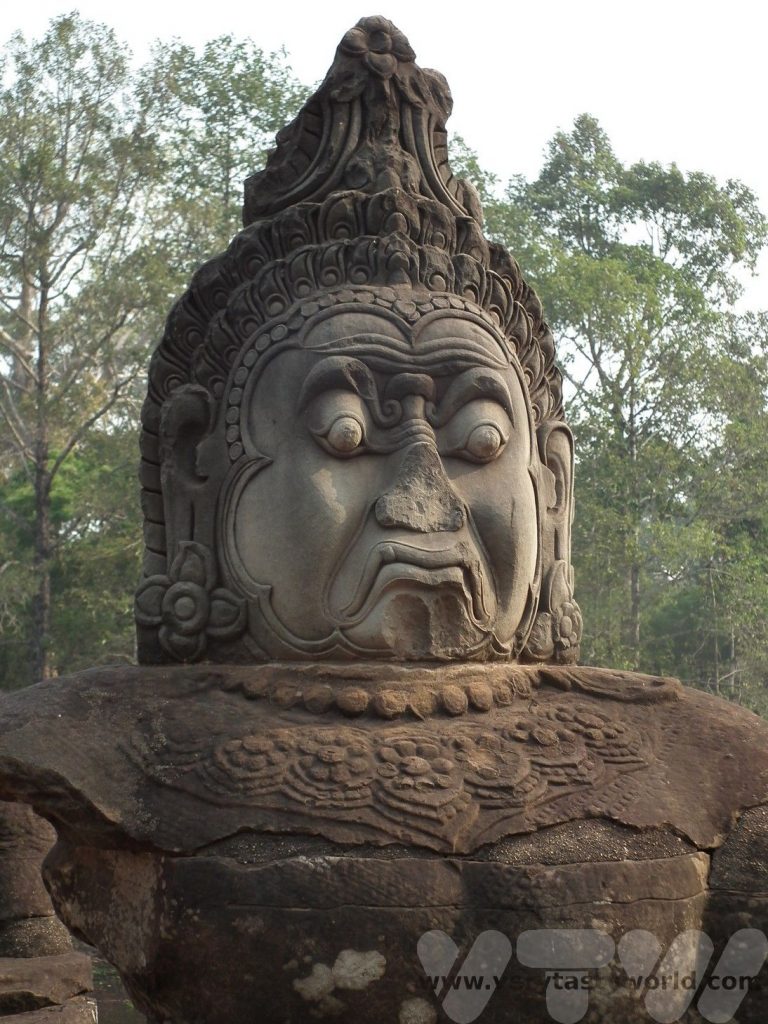
The Bayon is a remarkable structure. It is covered with the stone heads of Bodhisattva Avilokiteshvara, smiling serenely and was the last great temple built at Angkor.
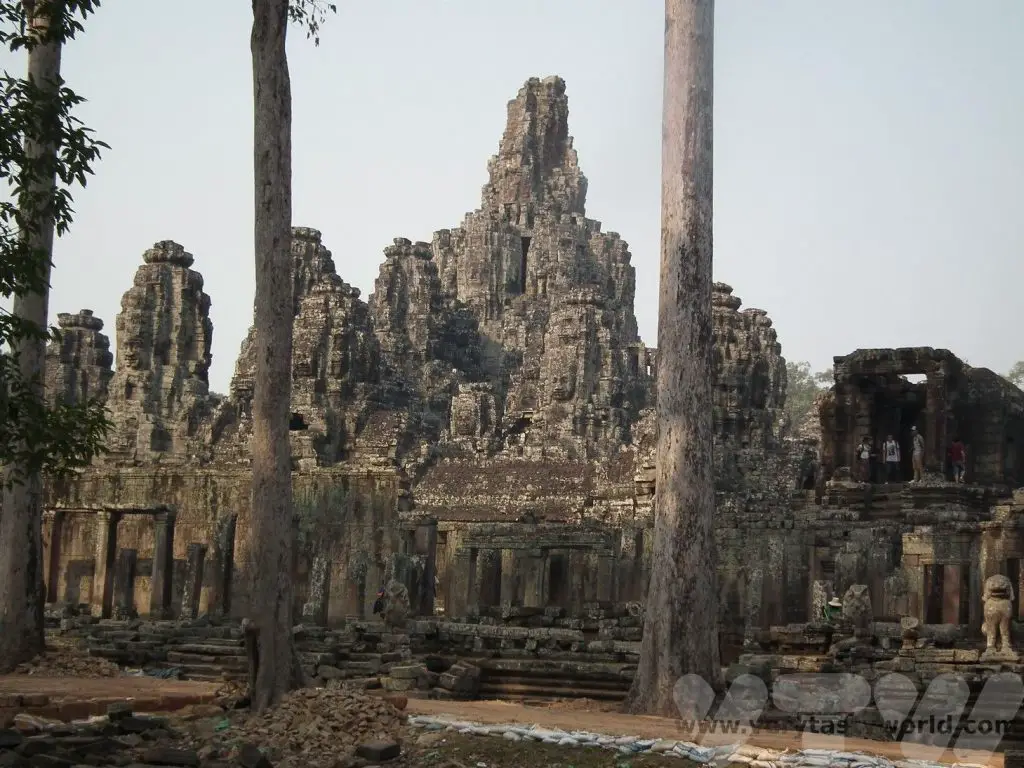
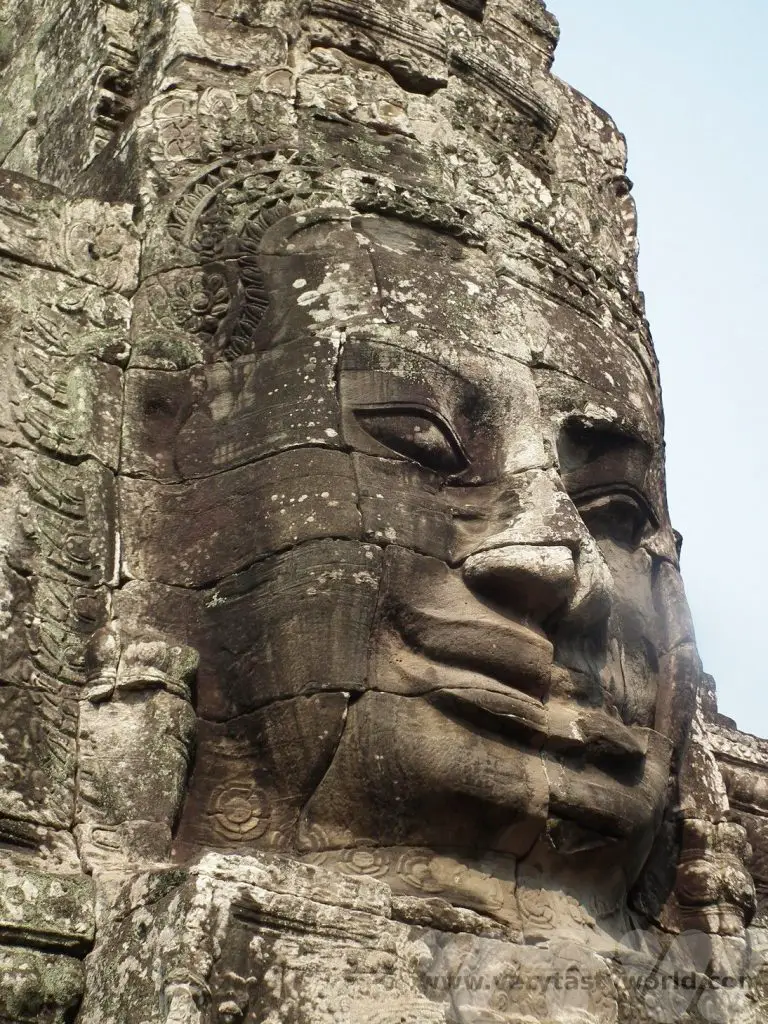
Moving into the Royal Enclosure, …the Terrace of Elephants was originally an extension of the palace of Phimeanakas and was the place from which Jayavarman VII could view his armies as they returned victorious.
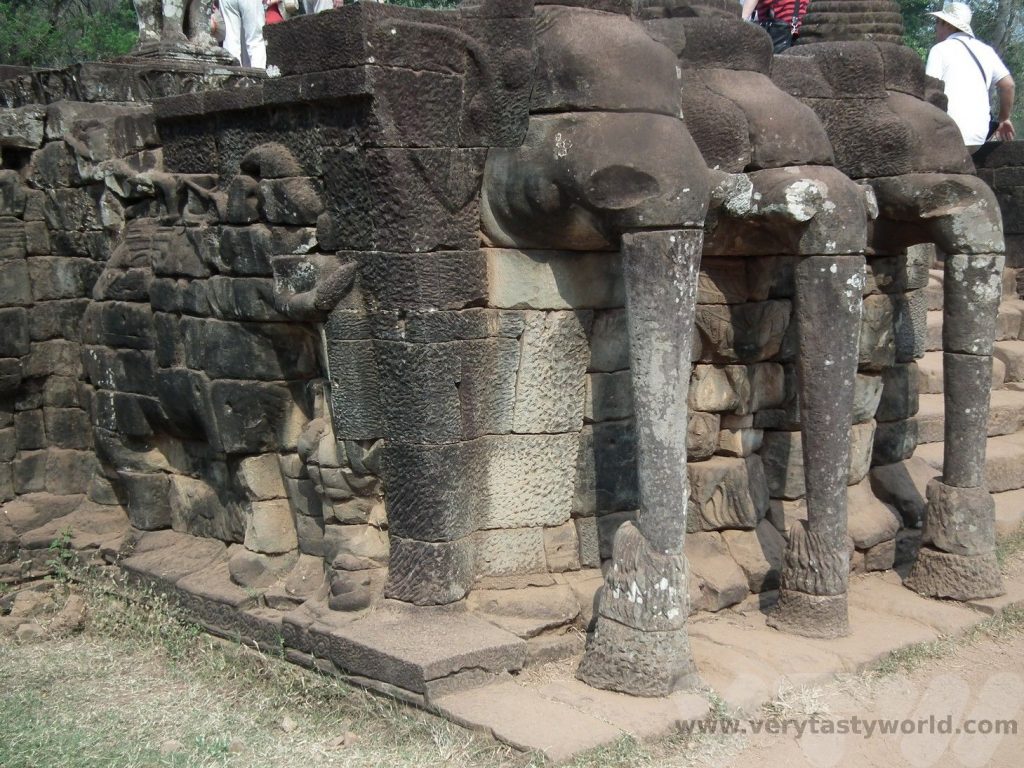
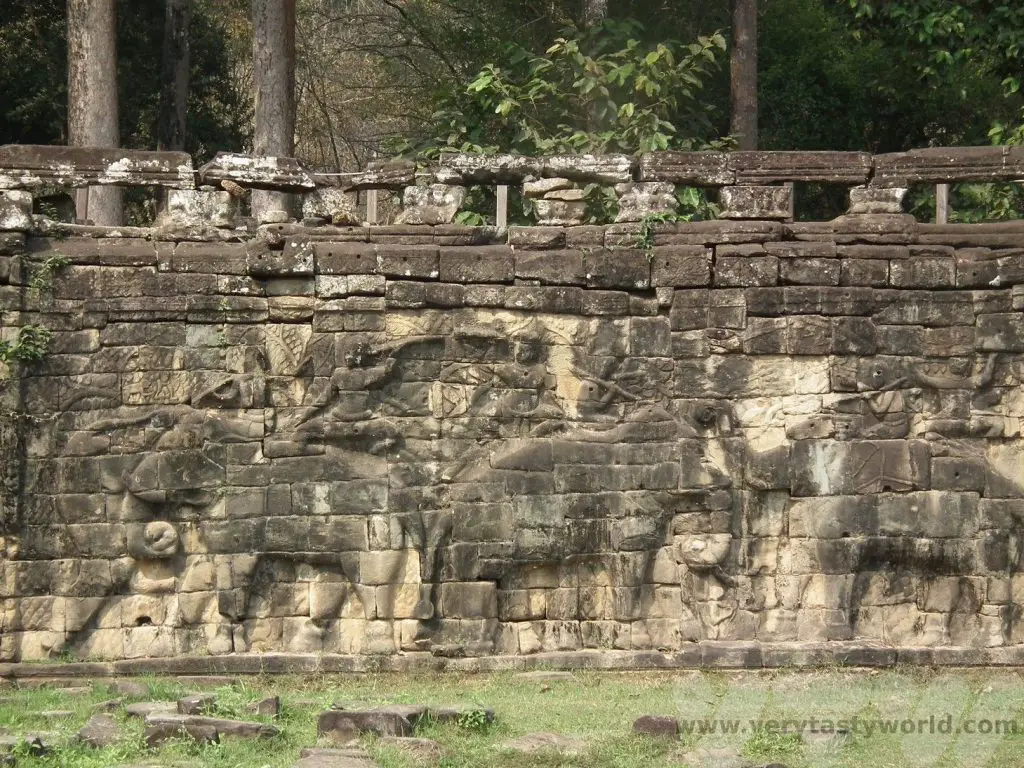
The Terrace of the Leper King was built by Jayavarman VII but the name has an unusual derivation.
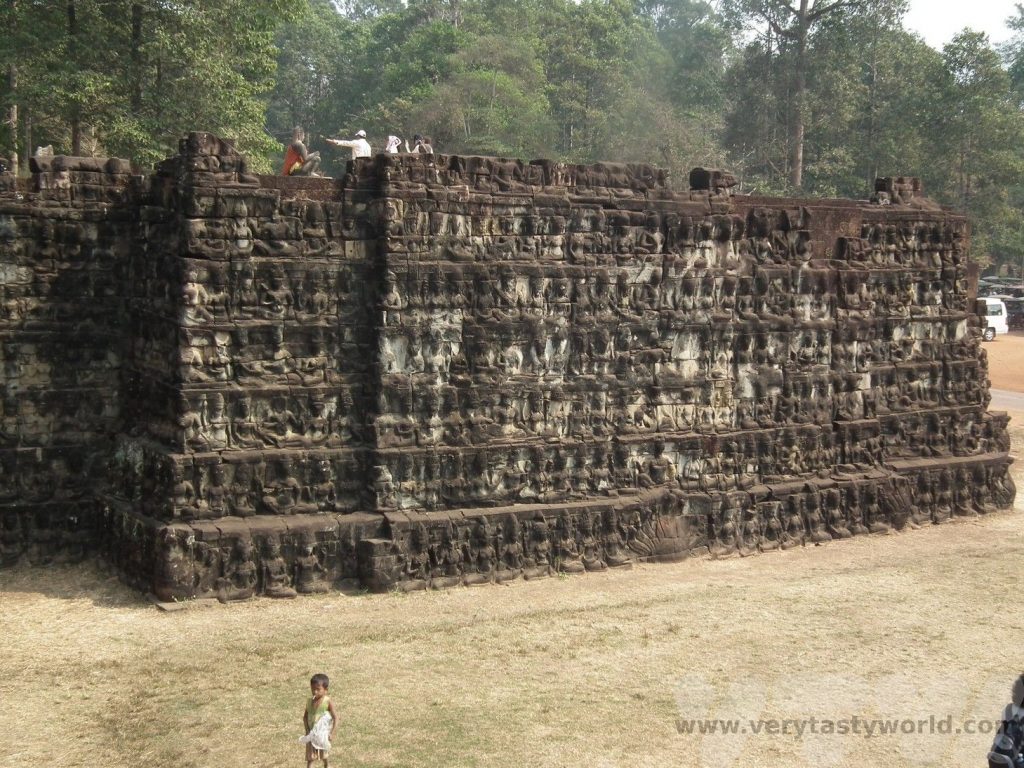
A sculpture found at the site was believed to have been created in the 15th century, had deteriorated and was covered in moss which gave the appearance of leprosy. There is also a link to the legend of King Yasovarman I who was believed to have suffered from leprosy.
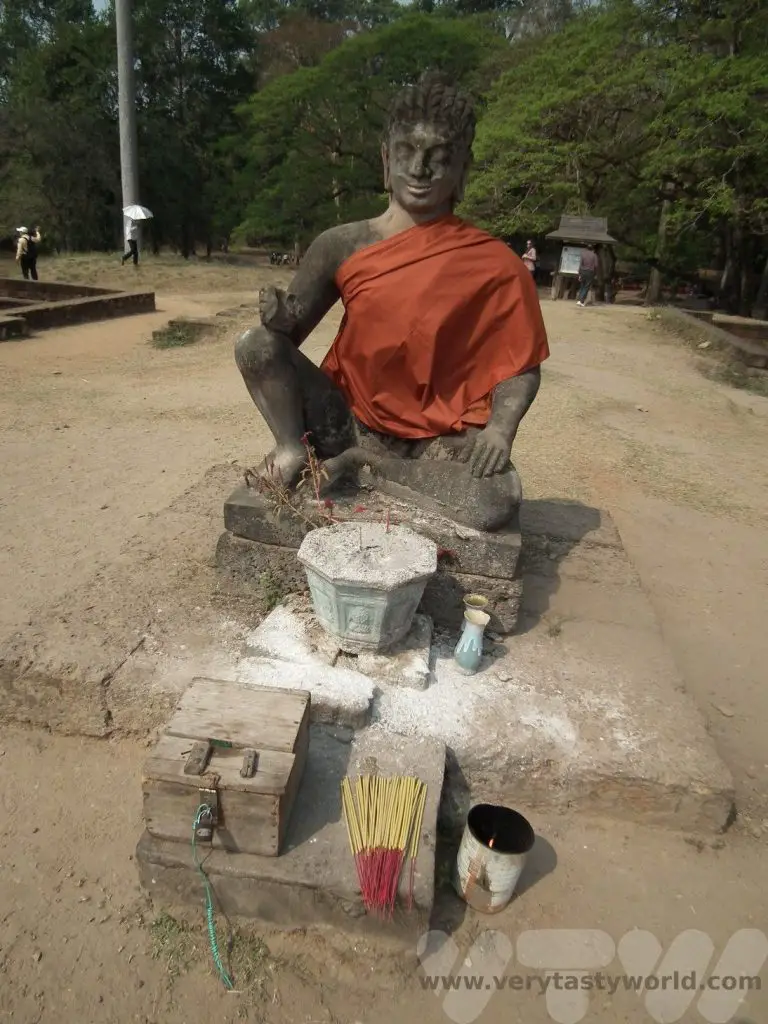
Visiting Angkor Wat – Other Temples to Explore
While Angkor Wat and Angkor Thom are the main attractions in the area there are so many other temples and buildings to visit.
Ta Prohm
A particular favourite of ours was Ta Prohm, just down the road from Angkor Thom.
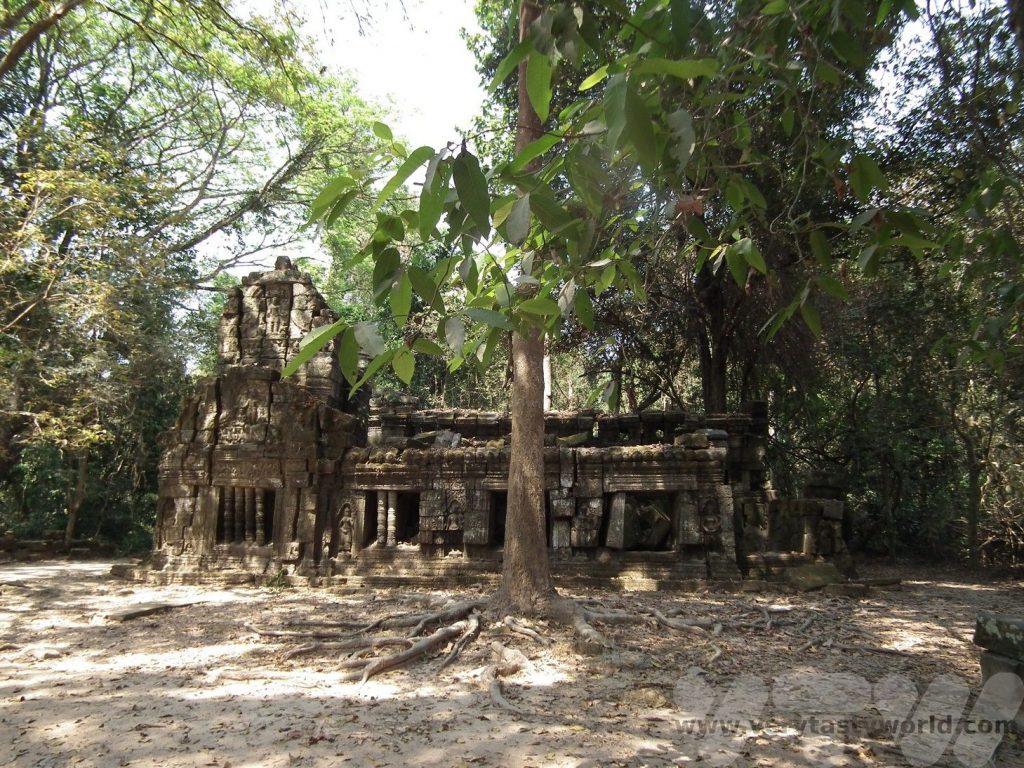
It was another temple constructed at the behest of Jayavarman VII (the creator of Angkor Thom) in the late 12th century and was originally called Rajavcihara. Apparently designed for the king’s mother it was a lavish temple, once covered in pearls, precious stones and gold, and home to over 12,000 people. However it was abandoned after the fall of the Khmer empire and lost to the jungle for centuries.
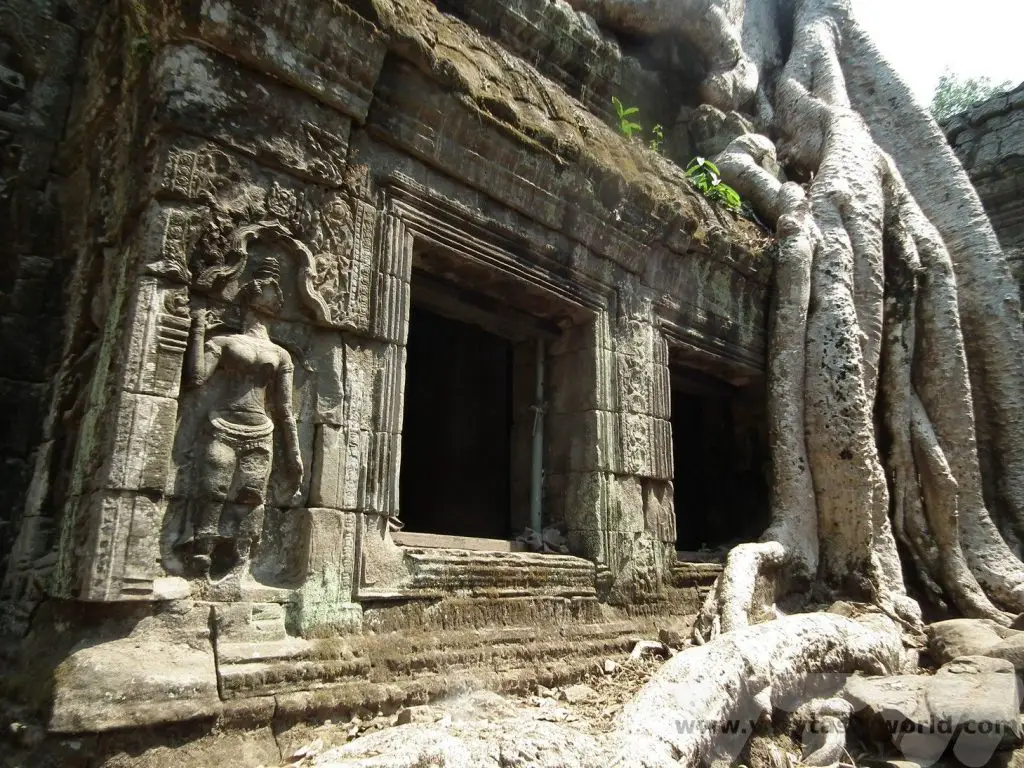
The design of the temple is typically Khmer, with a concentric design of square or rectangular temples – the enclosing walls encasing an inner sanctum. But, unlike many of the other temples in the region, this hasn’t been cleared and restored and the trees of the jungle have remained, forming a beautiful symbiosis with the buildings.
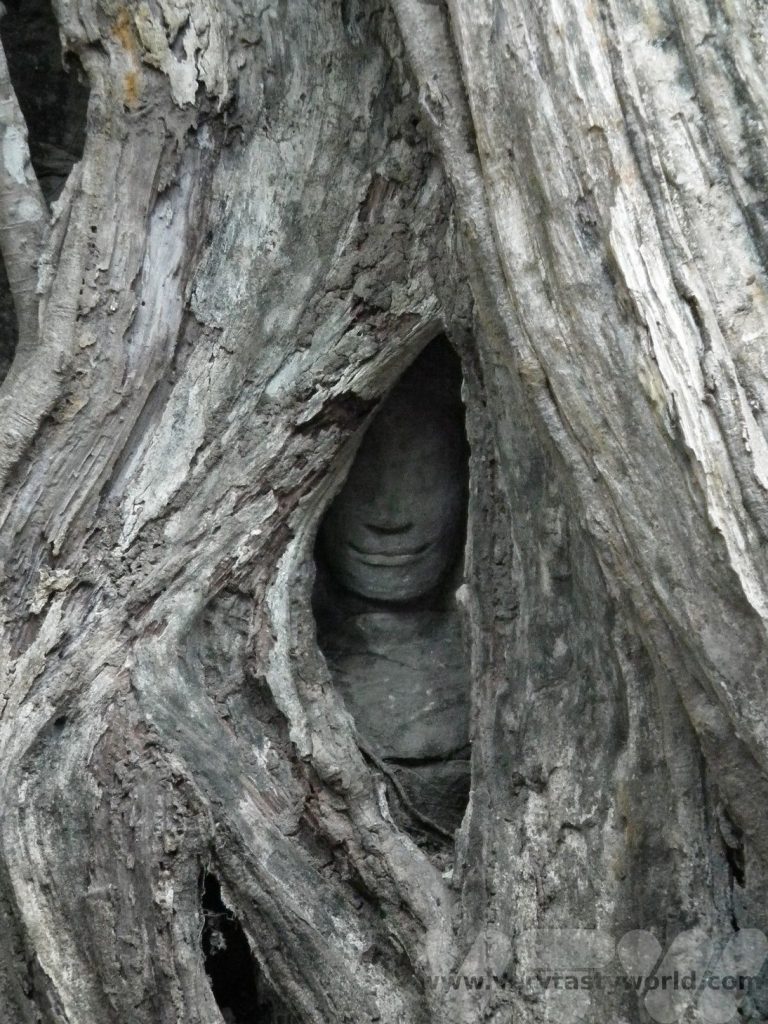
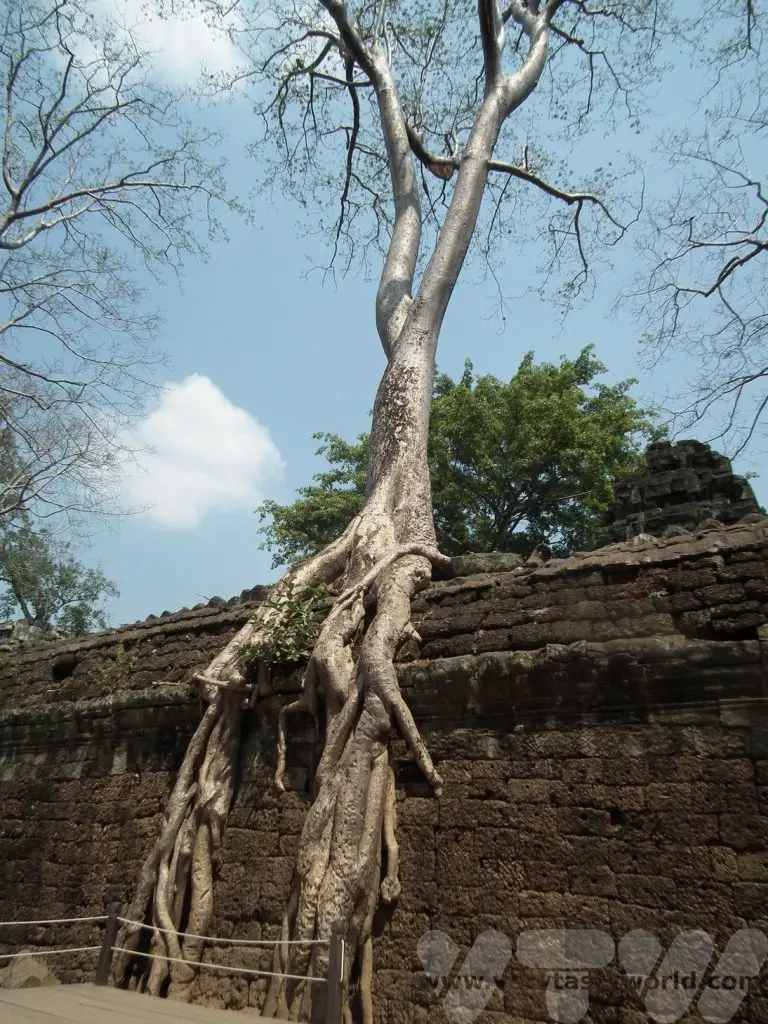
Banteay Srei
The Khmer Temple of Shiva at Banteay Srei, dating back to the 11th century, is the Citadel of Women. It has some remarkable sandstone decorations, friezes and lintels which are some of the best preserved in the region.
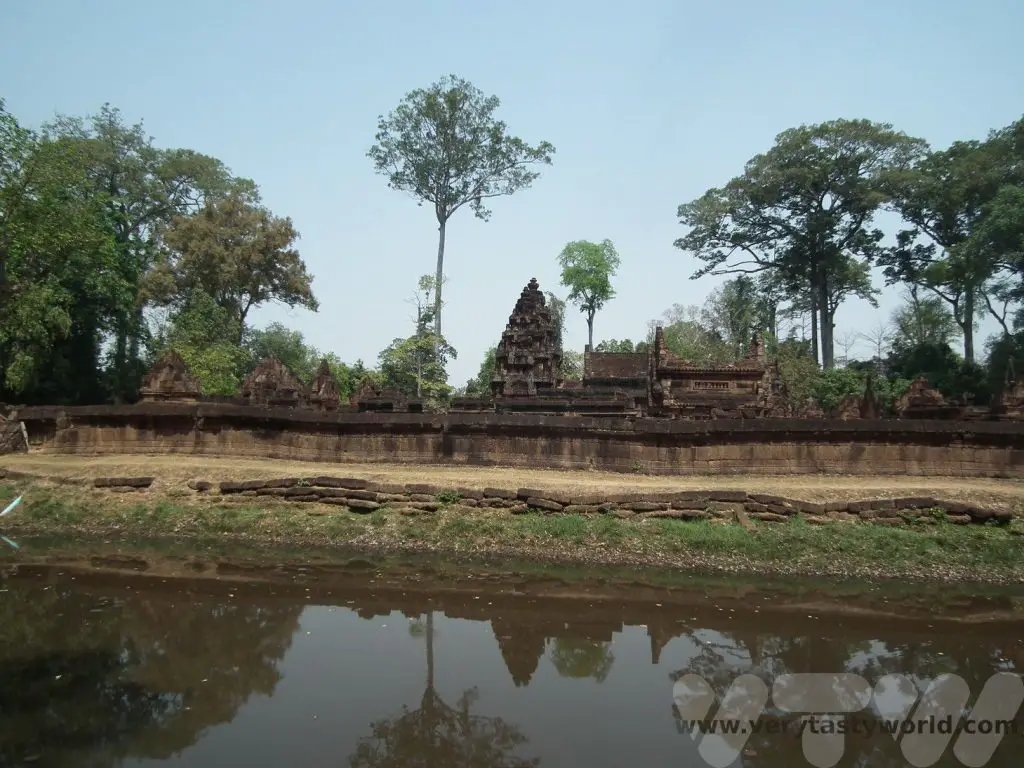
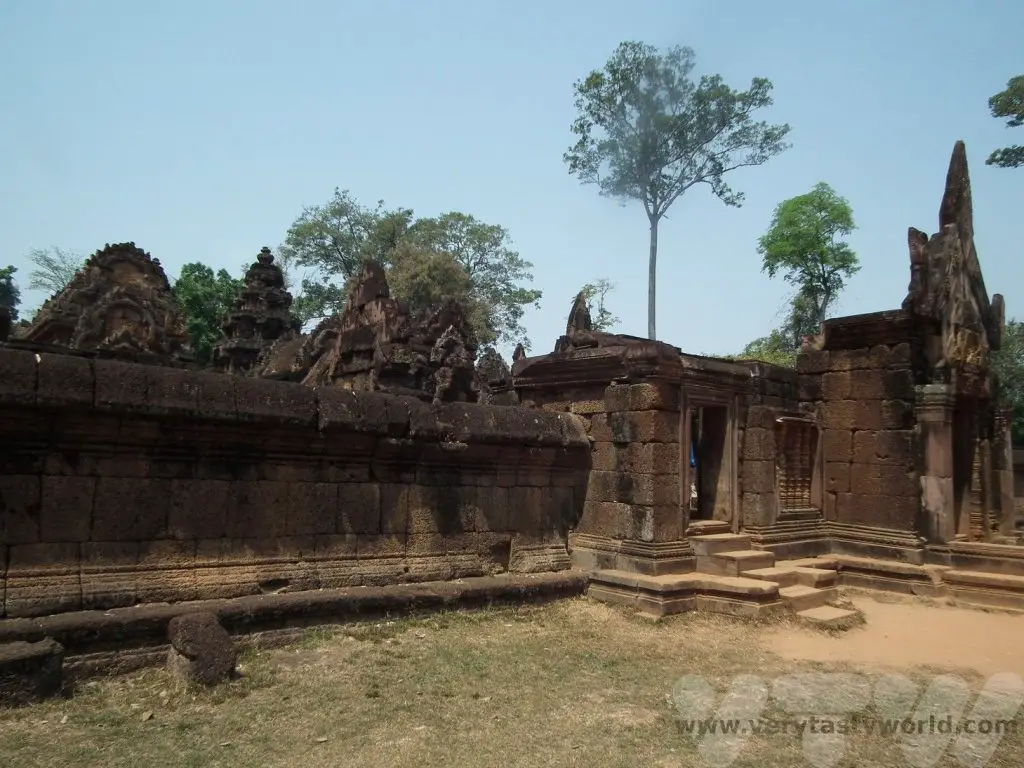
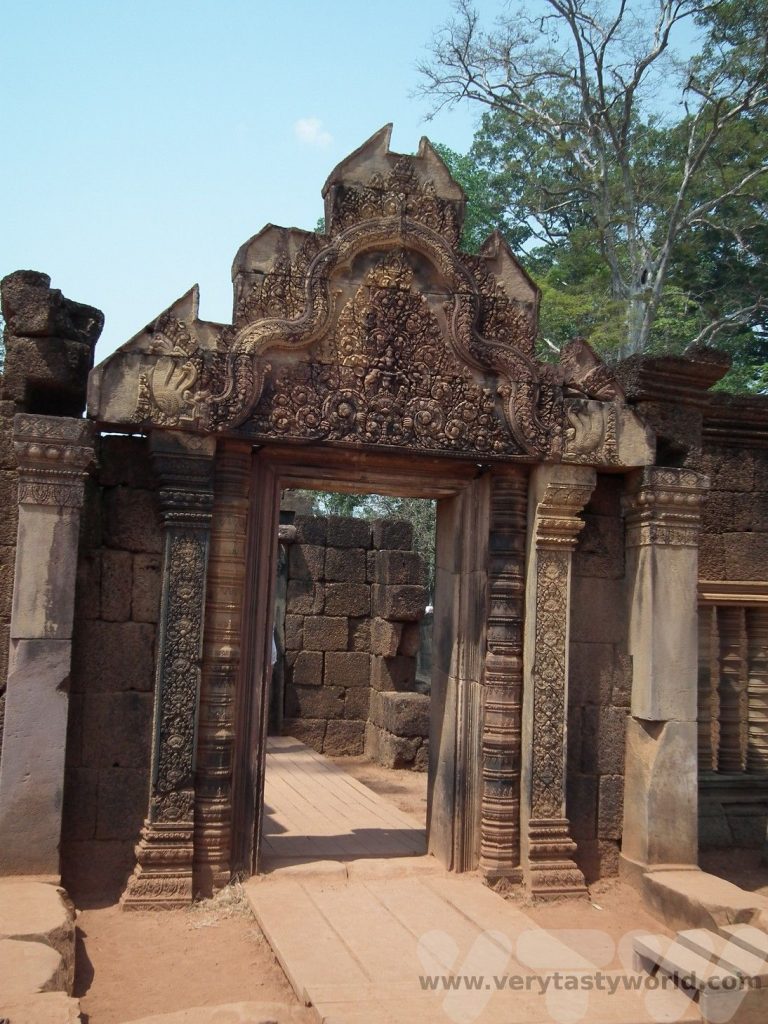
Kbal Spean
Kbal Spean is a Hindu Pilgrimage site set deep in the jungle to the North East of Angkor. It actually pre-dates the Angkor Temples by around 200 years and is the oldest site in the region.
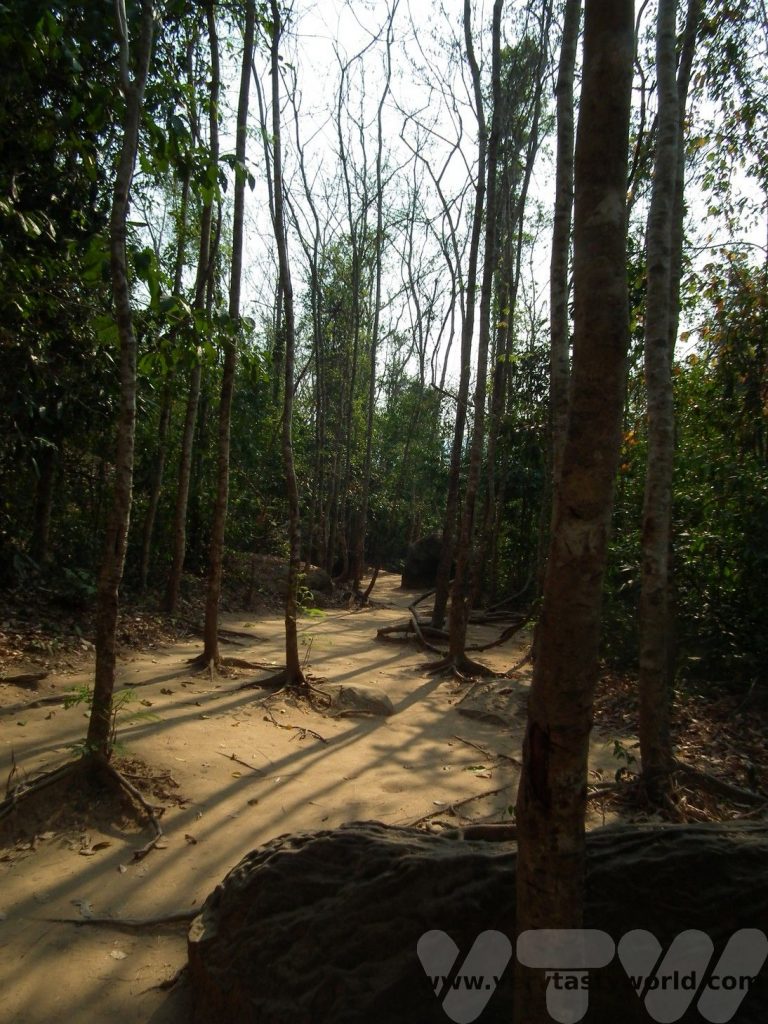
After hiking for around a kilometre through the jungle you reach the River of a Thousand Lingas, amazing sculptures that are actually located in the river bed.
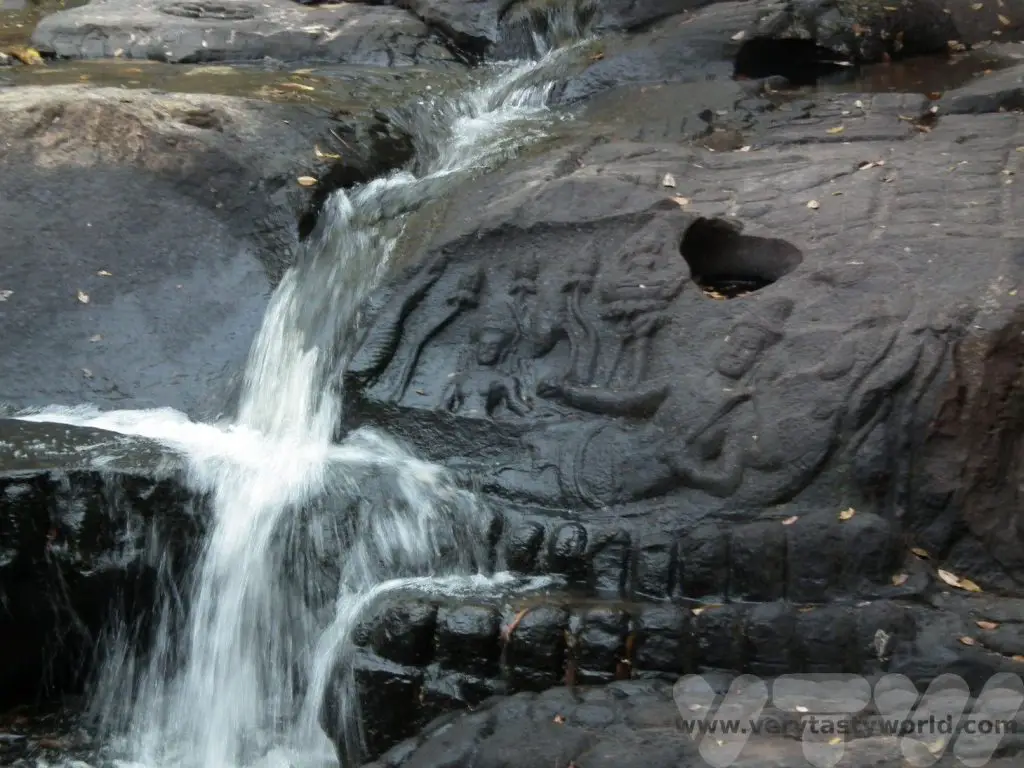
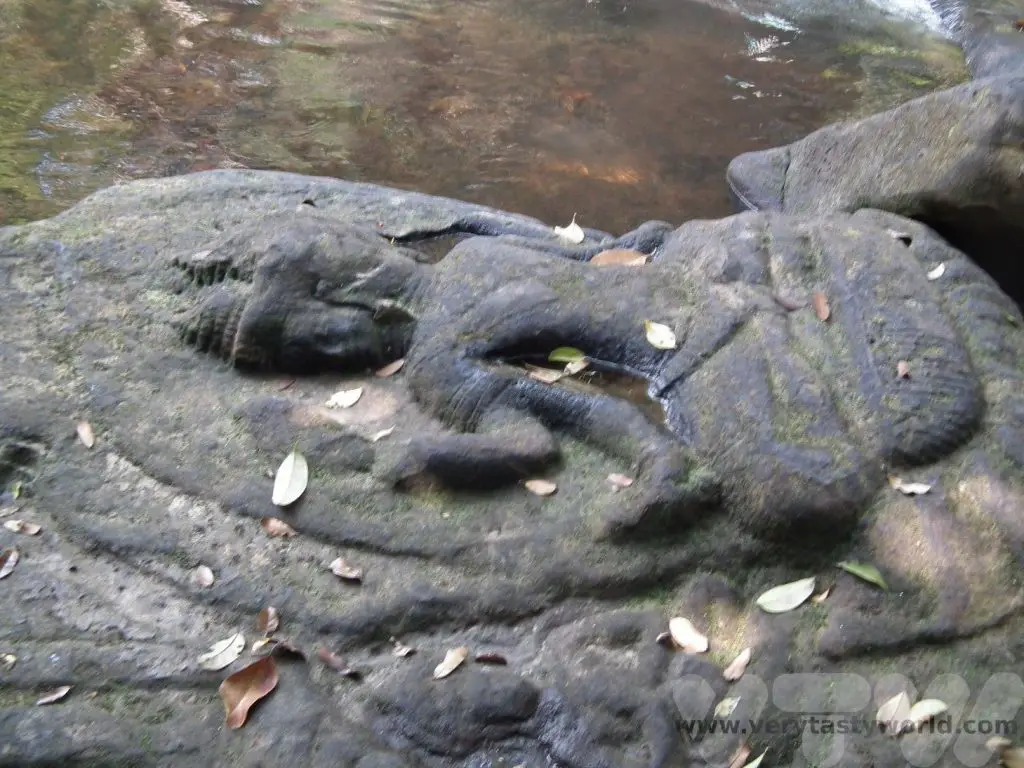
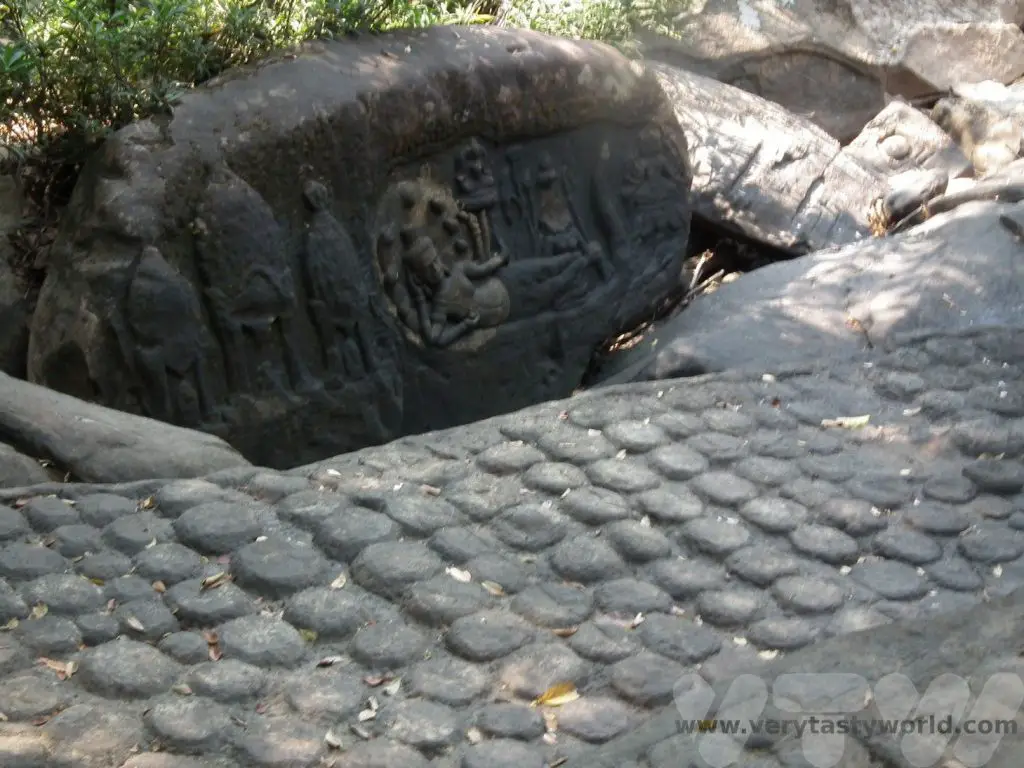
The Roulos Group
And finally, the other temples we visited were the Roulos group which are older and date from the 9th and 10th centuries. They are located around 15km south-east of Siem Reap in the former city of Hariharalaya. King Jayavarman II founded the Khmer empire in 802 CE. His successor was his nephew, Indravarman I, who initiated the construction of the temples here.
Preah Ko was the first. The name means ‘sacred bull.’
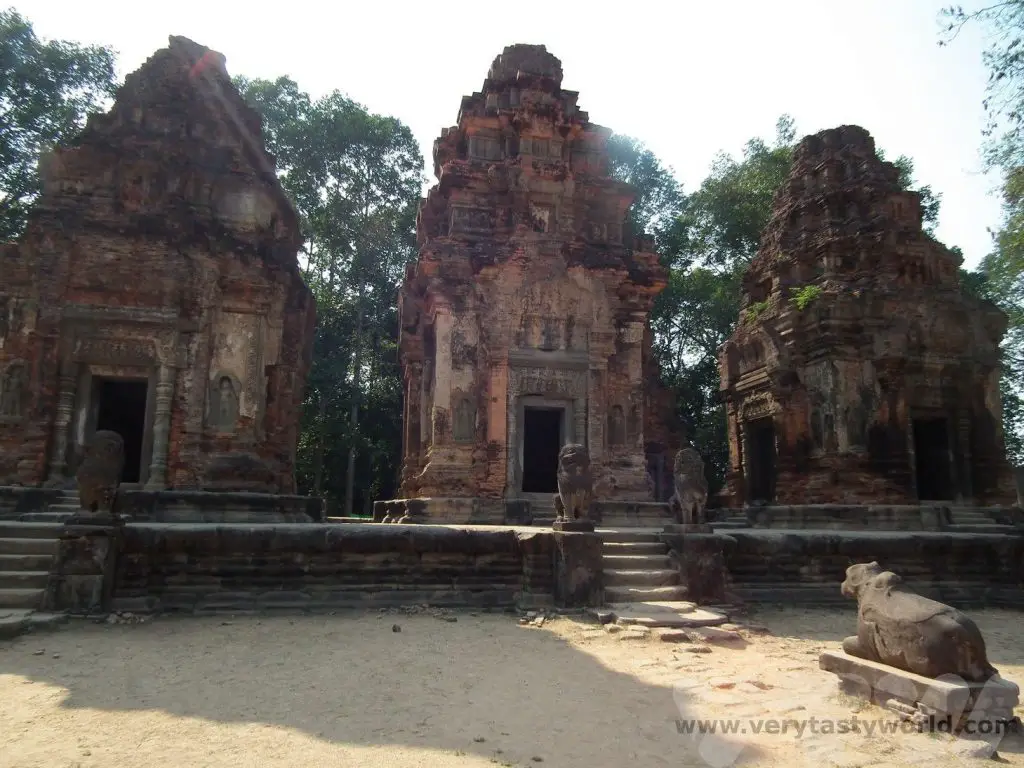
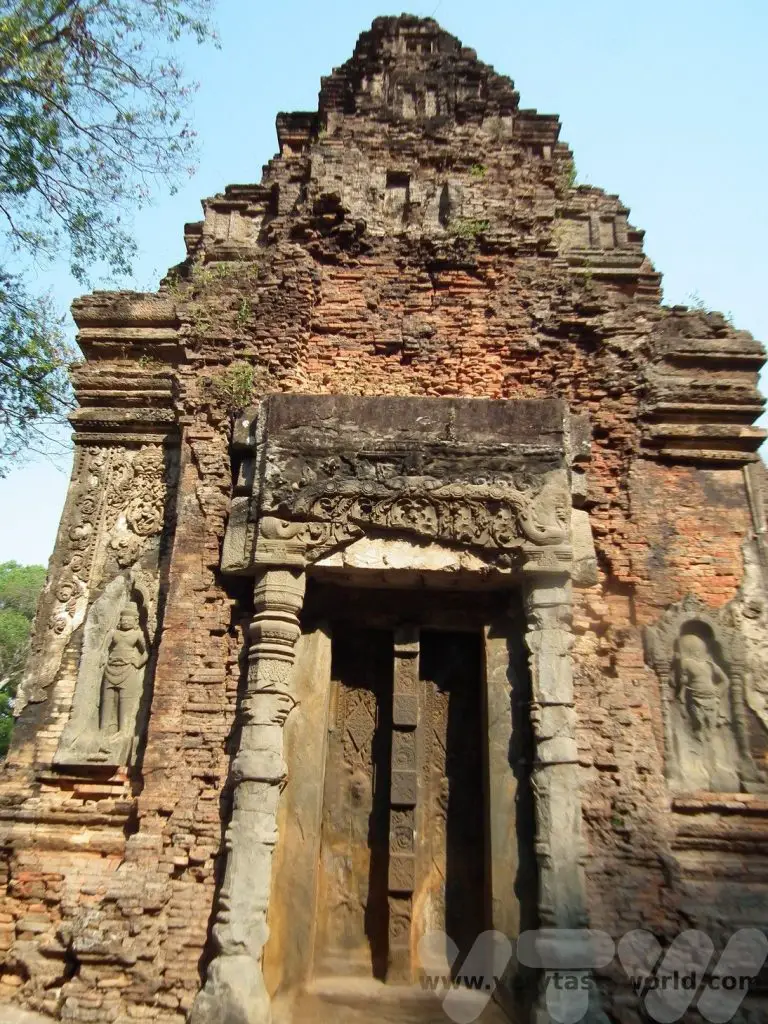
Bakong was next and is considered to be the first Khmer temple mountain. It is the most impressive of the structures in this group. This was King Indravarman’s official temple. The pyramid has five levels and is surrounded by two towers on each of its sides.
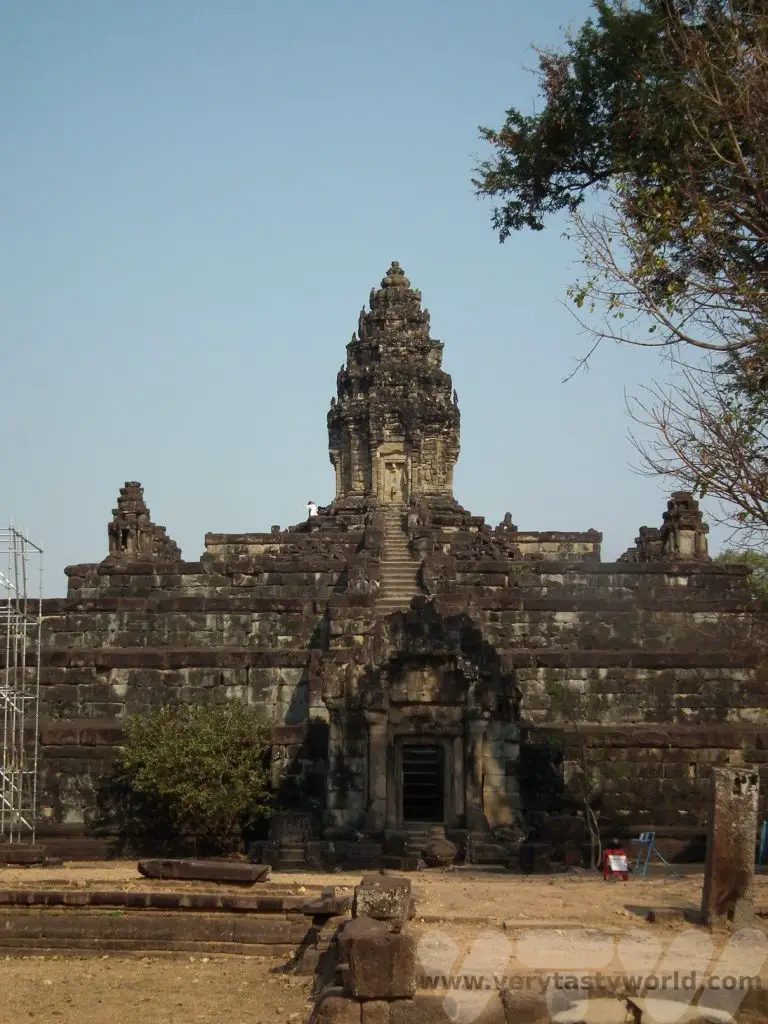
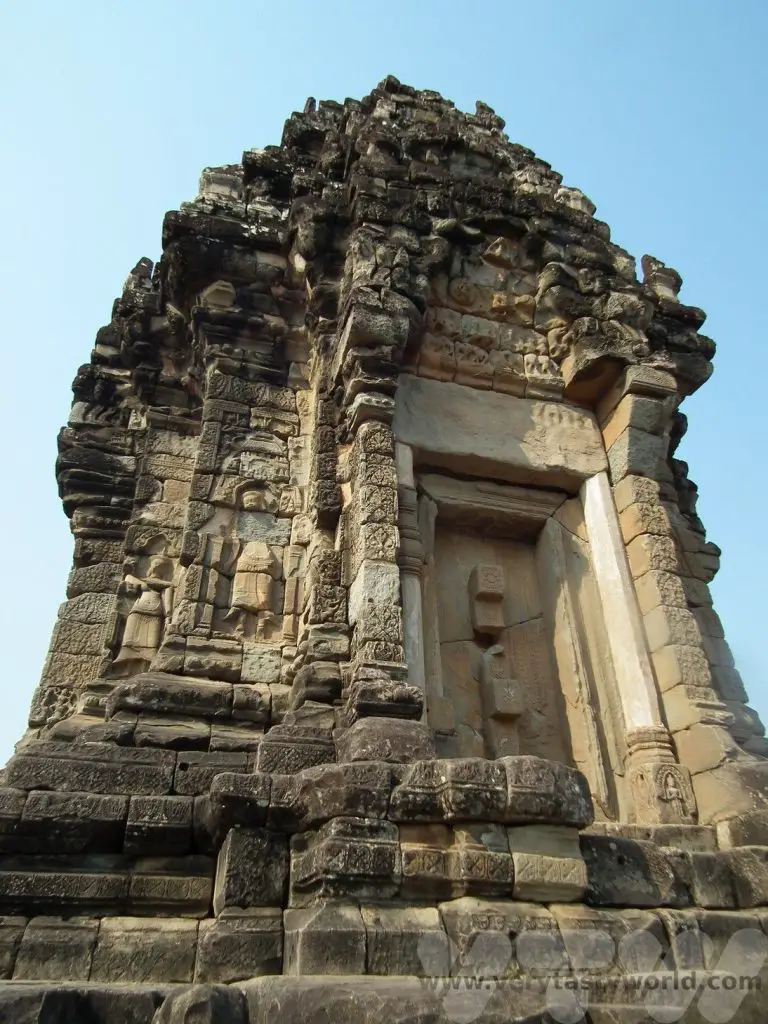
The Lolei temples are grouped together. These are of a brick construction and represented King Yasovarman’s parents and grandparents. The taller towers are for his grandparents and the front towers are for the males in the family.
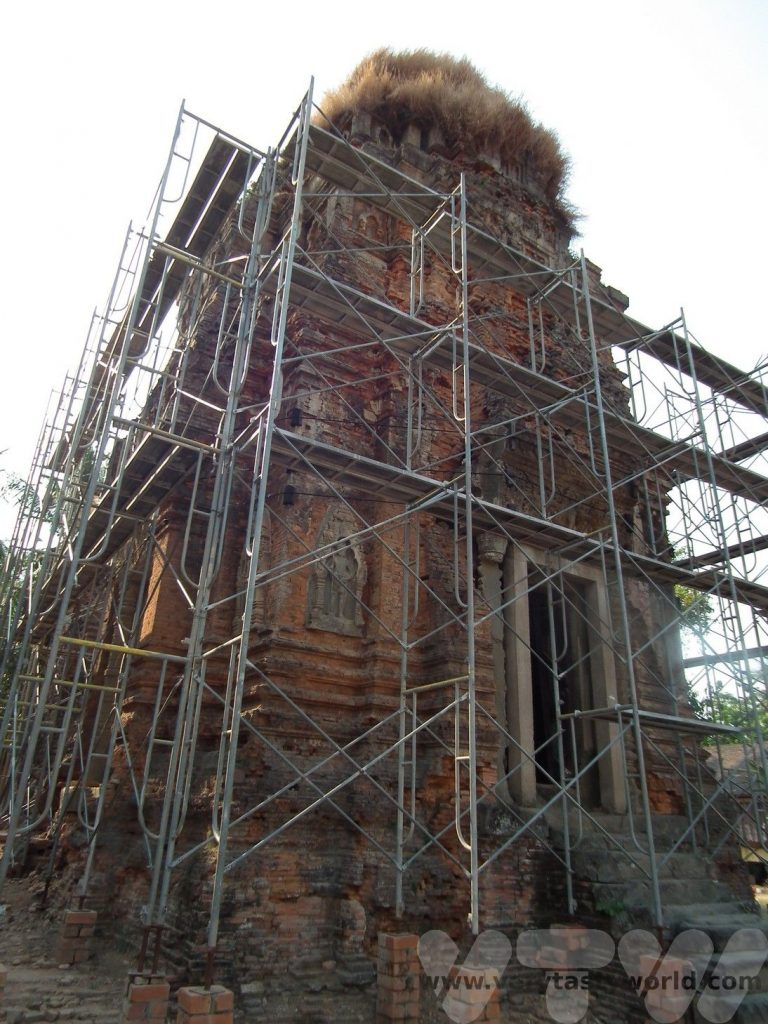
Après Sightseeing – Siem Reap
After all the sightseeing we would wander into Siem Reap. Pub Street is the place to find restaurants and bars in the evening – perfect for relaxing after a long day’s sightseeing. It is possible to visit markets, enjoy cookery courses and, of course, eat traditional Cambodian cuisine. This platter included spring roll, mango salad, fish amok (a fragrant curry), green curry, cha tu kuong (stir-fried water spinach) and steamed rice.
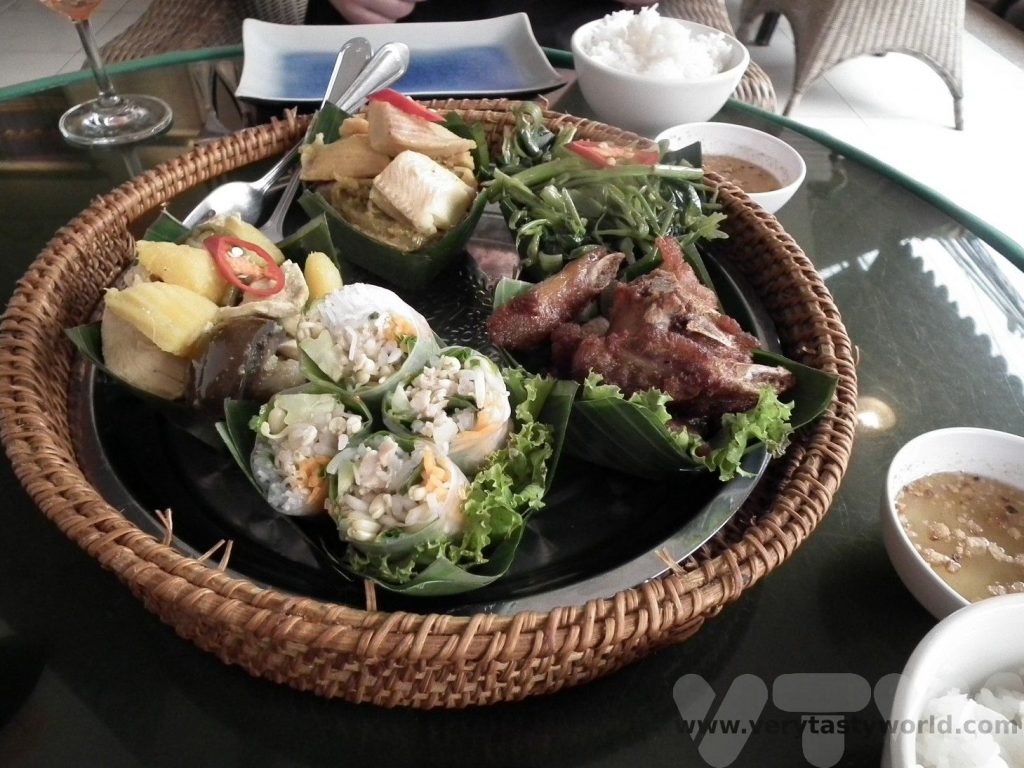
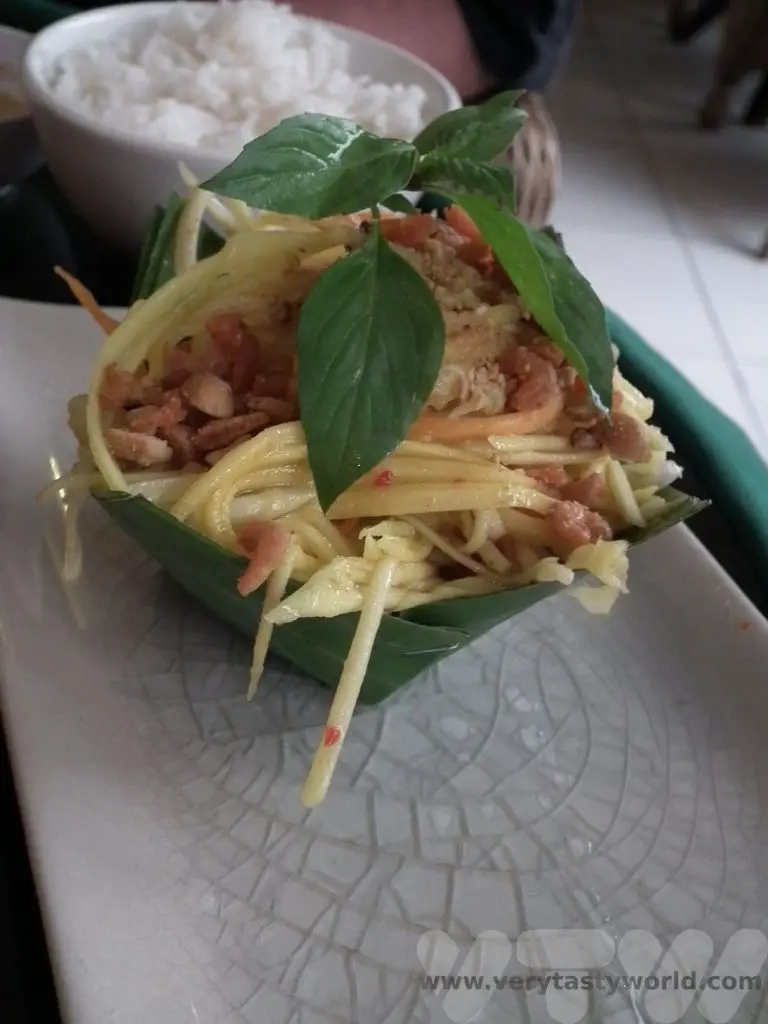
Other Excursions
Although our primary purpose of the trip was to visit Angkor Wat, there are other activities in the area. Siem Reap is located close to Lake Tonle Sap, the largest freshwater lake in South East Asia. It’s a fascinating lake because it is part of the Mekong river system. The Mekong and surrounding catchment feeds it during the wet season and the lake’s water level will rise to around 11m. But during the dry season the lake feeds the Mekong and water levels can get as low as 1m before the rains arrive. It’s a lake where local people live and work and it’s possible to take a boat trip and visit some of the floating villages.
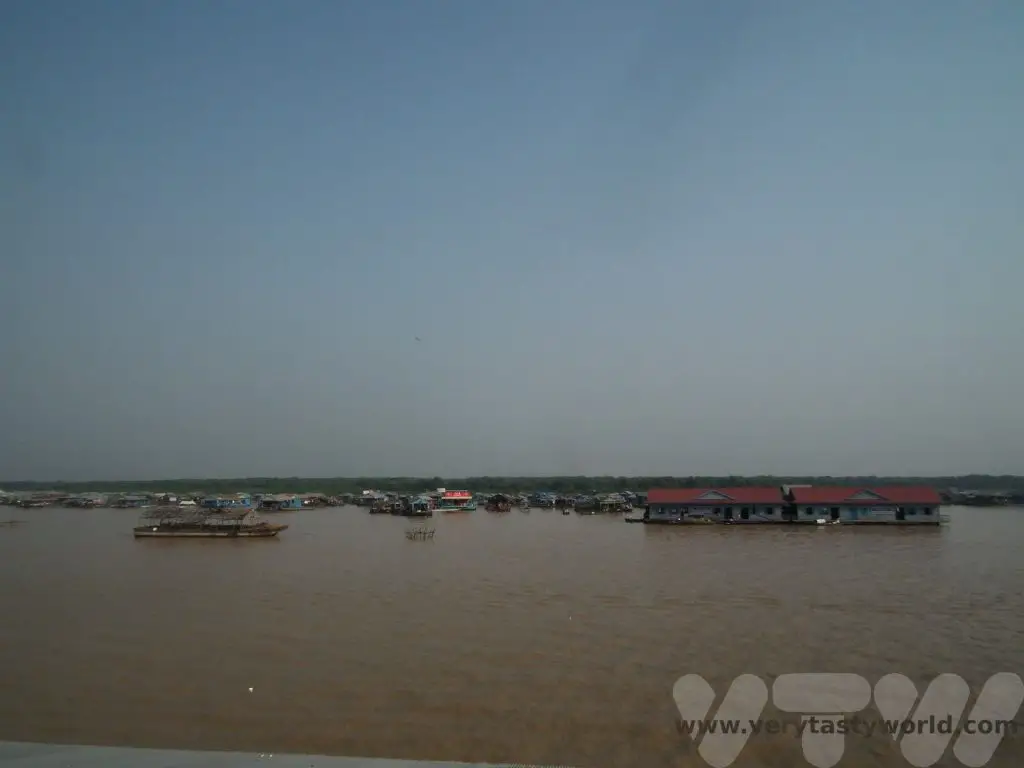
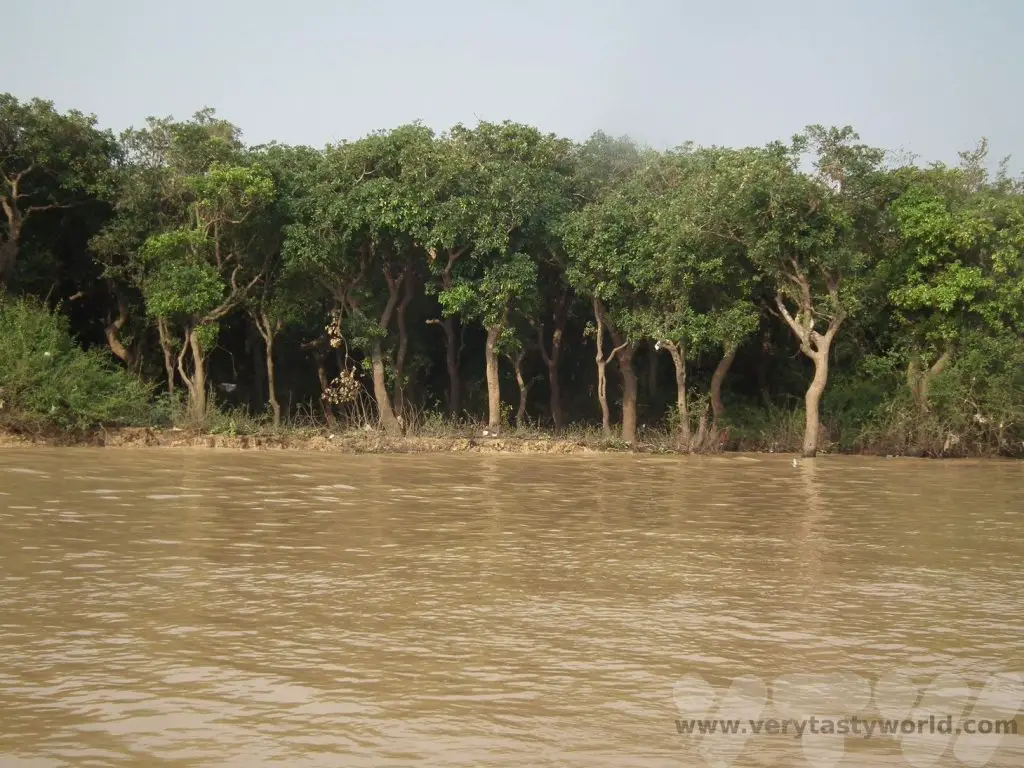
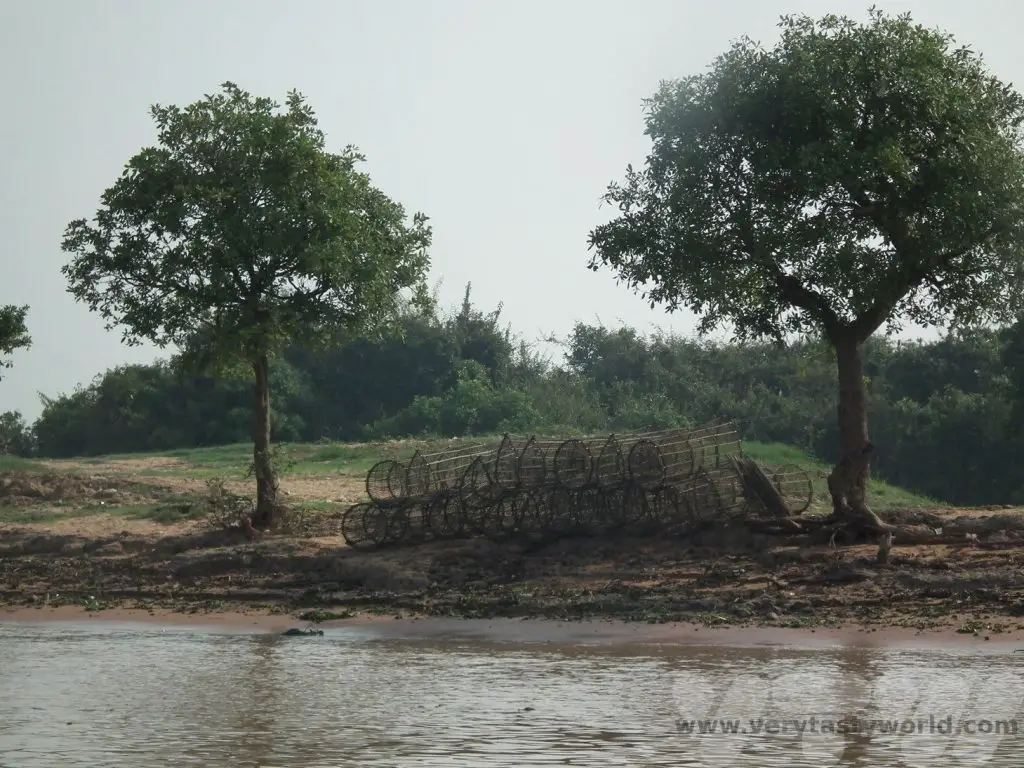
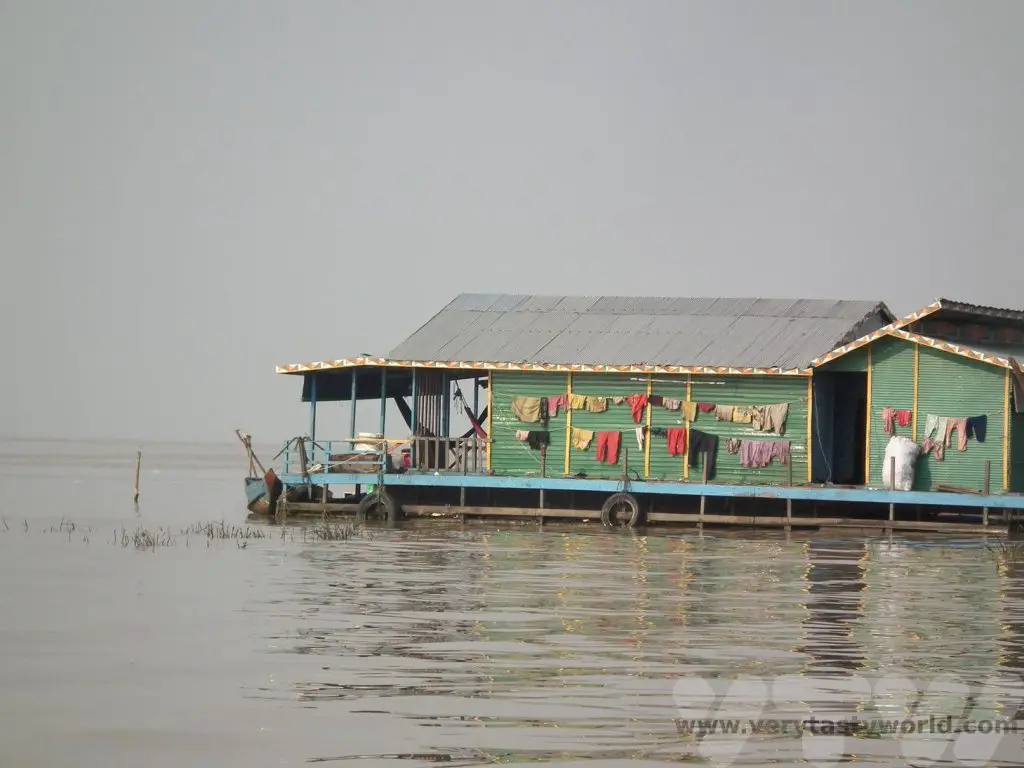
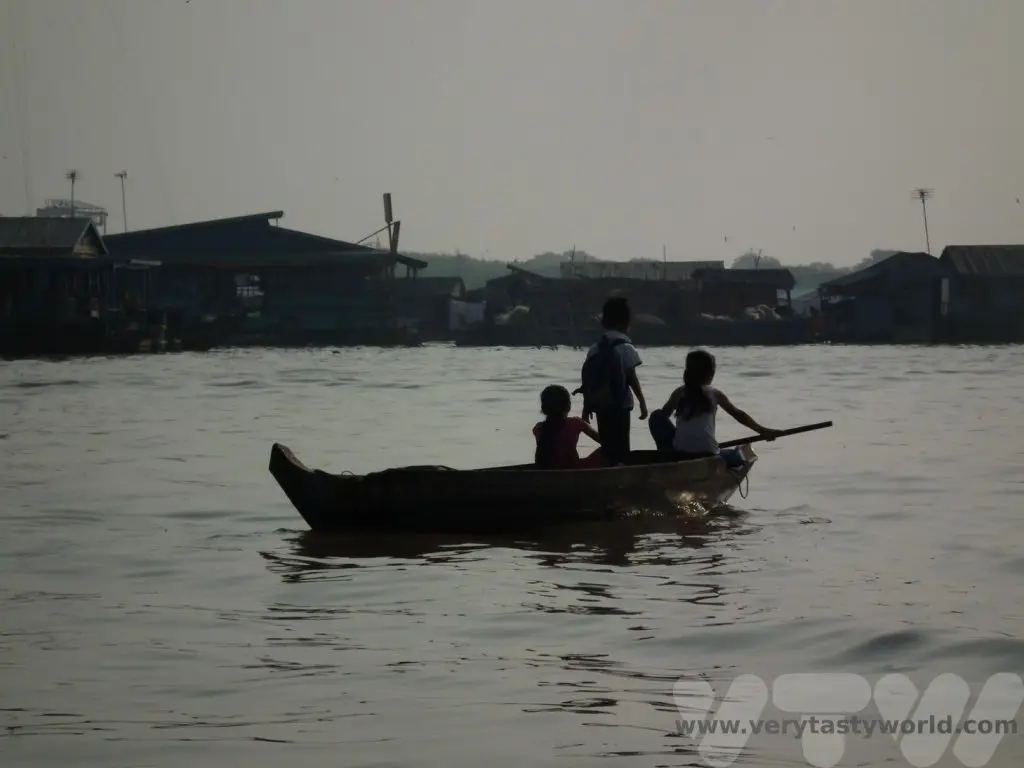
Related Posts You May Enjoy

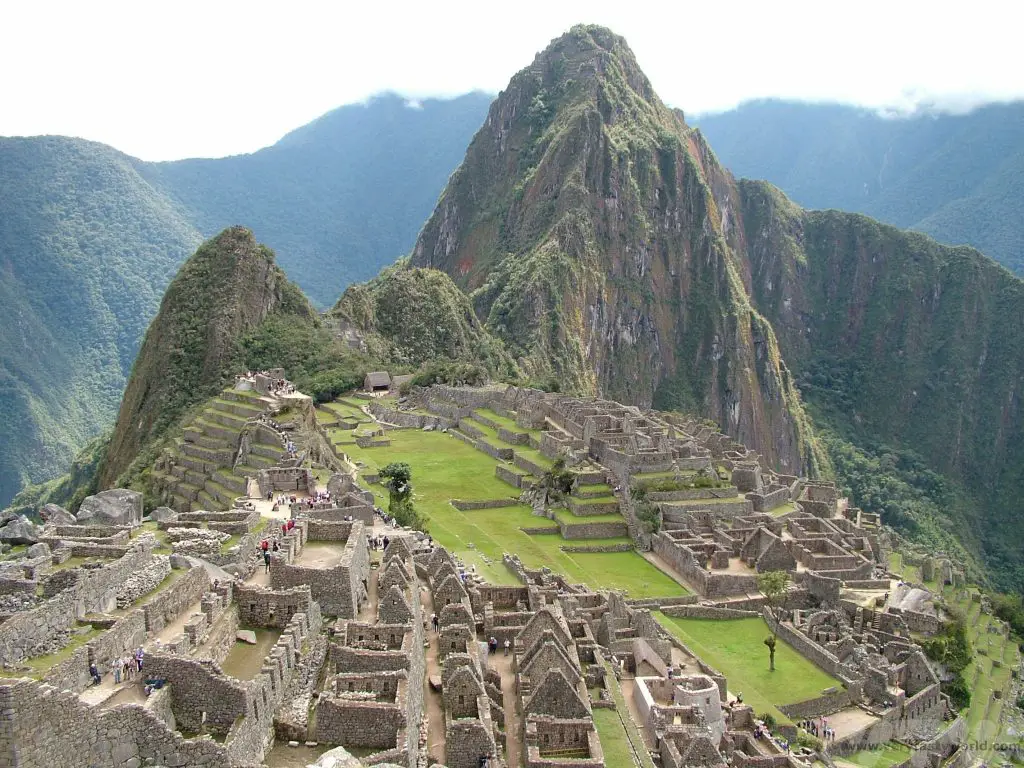
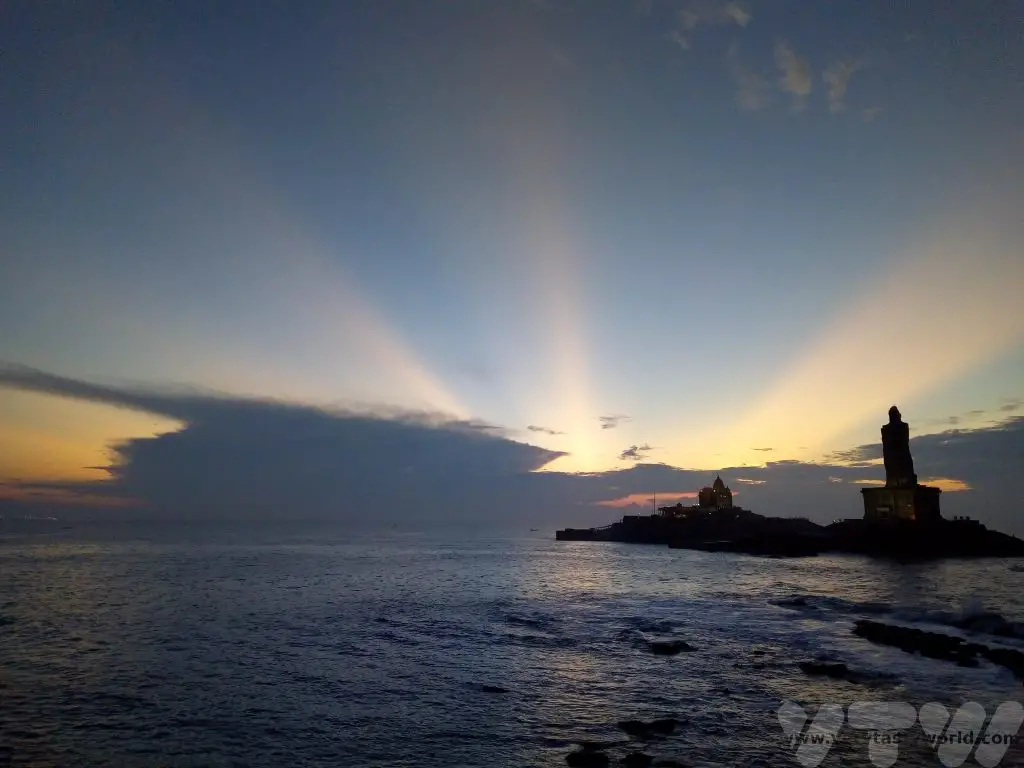
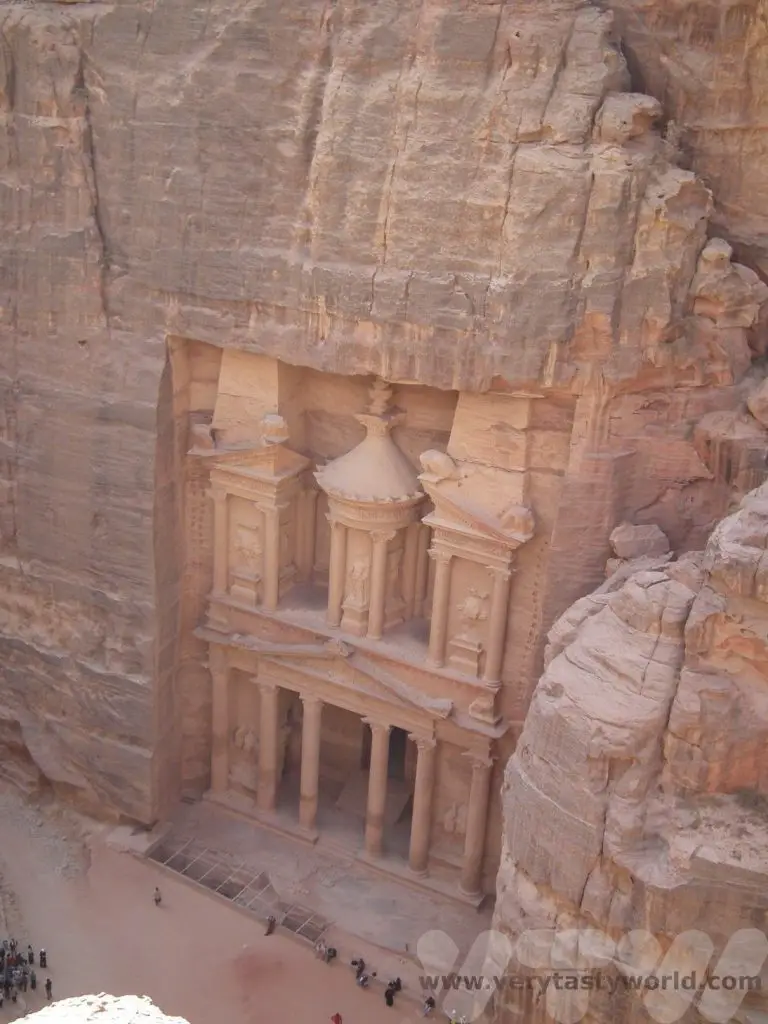
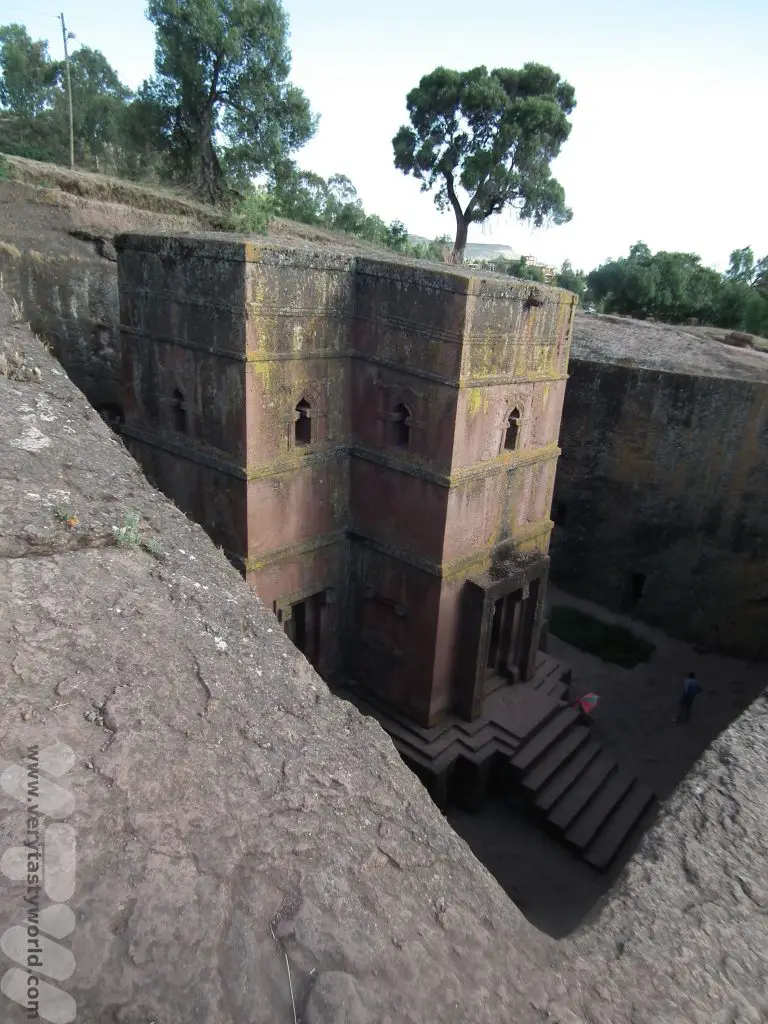
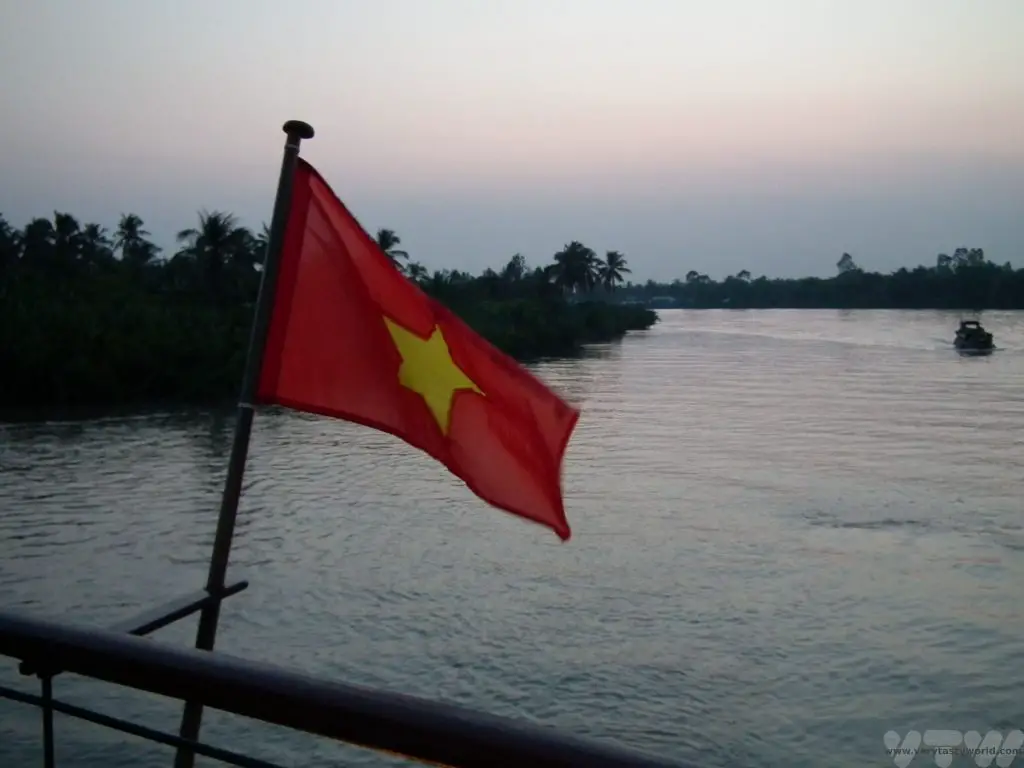
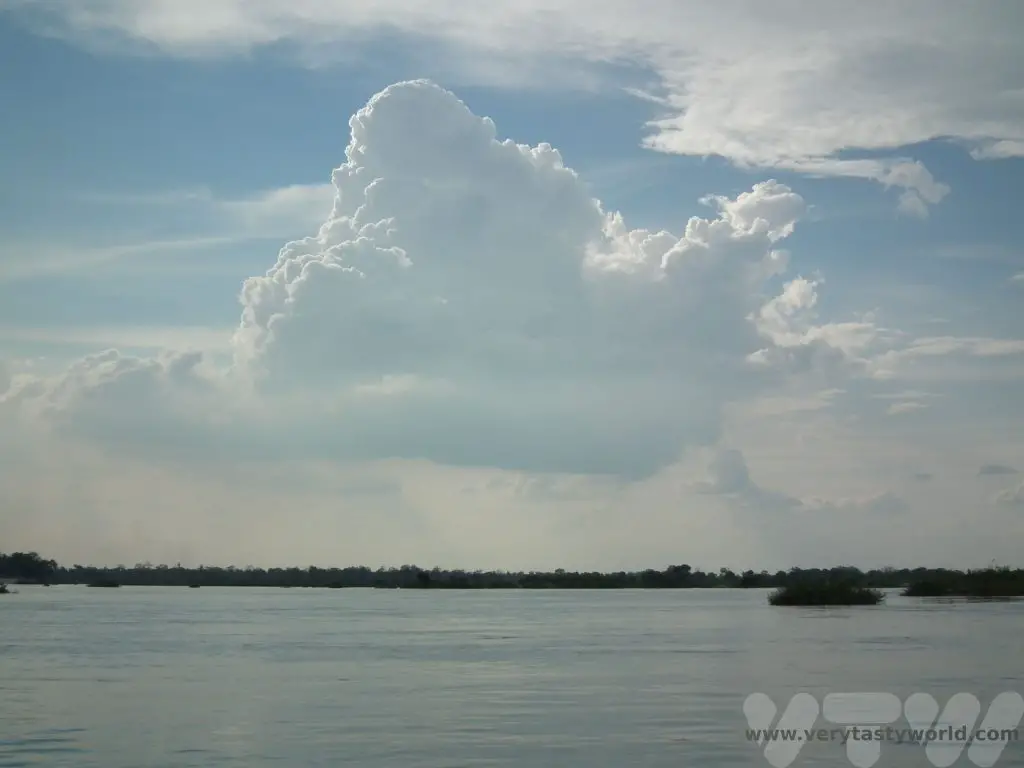





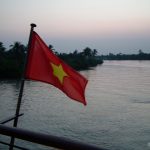


I always love reading about and seeing pictures of Angkor Wat. It’s such an enigmatic and mysterious place. Great tip about getting breakfast to go to help make seeing the sights easier with less people. Do you think seeing at sunrise was worth the effort?
Thank you. We think it was worth getting up to see the sunrise – it’s a “once in a lifetime opportunity” that we didn’t want to miss. We arrived early and got a good viewing spot. And, even though the sunrise itself was very crowded, the visitors melted away so we had a fantastic view of the site while eating breakfast and were the second people inside Angkor Wat when it opened!
You got to see so much of the whole archaeological sight and the photos are impressive. Love the ones of the sculptured stones from the river beds. I didn’t know they existed and missed out on them. Your three day pass stood you in great stead, wish I could have explored as much as you did.
I only had a one day pass (a very full day however with a local certified guide and car). You are totally right in advising a guide goes with you – I would have no idea what most of the buildings were and I got explanations of what the bas-reliefs on walls and sculptures were all about.
The site is one of those “once in a lifetime” places to explore and no-one should miss out on going there. Luckily my hotel was near the centre of Siem Riep so I enjoyed “Pub Street” without having to worry about how to get back to the hotel. Loved reading and reminiscing about Angkor Wat here.
Thanks so much for your kind comment. You’re absolutely right about Angkor Wat being one of those “once in a lifetime” places. Yes, we found the guide really helpful and learned so much about all the temples that we visited. The Kbal Spean river sculptures were amazing.
Angkor Wat is so high up on my bucket list! Your pictures are incredible, I didn’t think it was possible to make me even more eager to visit. Great post!
Thank you so much. Really hope you get to visit – we are sure that you will love it. It’s even more remarkable than pictures can show.
I always appreciate a Thorough post – especially as I’m personally preparing to visit a place – and this is definitely the most thorough post I’ve read on Angkor Wat. Great info!
Thank you so much for your kind words. We do hope you get to visit, it really is a remarkable place.
What a great post with some wonderful photos. This is another of my bucket list places to visit so, when it happens, I’ll remember your top tips – especially the one about breakfast!
Thank you so much. Yes, the breakfast tip worked brilliantly for us. Hope you get to visit, we are sure you will love it.
Cambodia was on our family travel list for years and somehow we still haven’t been there! Bookmarking your post in the hopes we make this trip some time soon!
Thank you! Really hope you get to visit – it is the most amazing place and the surrounding temples are fascinating as well.
Our guide also advised us to get to Angkor Wat early in the morning and after watching the sun rise we then left and explored Angkor Thom and were the only ones there. We returned to Angkor Wat later in the day once the crowds had gone. To get good photographs of the Angkor Wat sun rise it is very helpful to be small as people were extremely kind and let me through to the front!
That’s a great tip about visiting Angkor Thom after sunrise then coming back to Angkor Wat later in the day. And great that people were so kind to let you get to the front for sunrise!
[…] Visit Angkor Wat, Cambodia […]